|
Summertime brings with it beach and pool time, picnics, vacations, and lazing in the hammock. Unfortunately, heat waves and unbearable humidity can also accompany the summer months. One often hears the phrase “dog days of summer.” The origin of this phrase is related to the stars, not dogs wilting in the summer heat! Sirius is the brightest star in the night sky and part of the constellation Canis Majoris—the “Greater Dog.” The ancient Romans and Greeks believed that when the Dog Star, Sirius, appeared in the sky and occupied the same region as the sun, it created the hottest days of the year. They also believed it brought bad luck, drought, and chaos. The Romans called it “dies caniculares” or “days of the dog star.” For the ancient Romans, the dog days of summer were believed to occur from approximately July 24 to around August 24. Over time, the constellations have drifted, and the “dog days” dates have changed. According to the Old Farmer’s Almanac, the Dog Days are considered to be between July 3 and August 11 in the Northern Hemisphere. However, it seems that these days, heat and humidity may linger for a bit longer, regardless of Sirius’s position in the sky. Although one might tend to prefer white or rosé wines as the temps begin to climb, red wines should not be overlooked during the summer months. Many light-bodied to full-bodied reds are ideal for sipping outdoors while enjoying grilled fare. For instance, unoaked or lightly oaked red wines tend to be lighter and fruitier. Slightly chilling many red wines for no more than 30 minutes can enhance the flavors, minimize the focus on alcohol, and make the wine more refreshing. When choosing a wine to drink while outside on a hot day, I recommend staying below 14% ABV. (alcohol by volume) Alcohol is a diuretic that contributes to dehydration. And when combined with outside heat, which leads to sweating, one can become dehydrated quickly. Therefore, it is essential to drink water and stay hydrated! Here are two white and two red Italian wines to enjoy this summer or any time of the year. The Whites Bolla Soave Classico DOC 2023 Founded in 1883, Bolla winery is situated in the countryside of Valpolicella and produces classic Venetian wines. This wine is 85% Garganega and 15% Trebbiano di Soave. Grapes are sourced and handpicked from 15-to 25-year-old vines in the Soave Classico hills, where the soil is of volcanic origin. After fermentation in stainless steel vats, the wine is left on the fine lees at a low temperature until it is ready for blending. Nose: White blossoms, apple, tropical fruit and citrus. Palate: A dry white wine with lots of character. Silky texture with pineapple, melon, honeysuckle, and lemon curd. Light and refreshing! Alcohol: 13% SRP: $9.99 Pairing suggestions: Enjoy as an aperitif or with seafood, light pasta, risotto, or salads. La Scolca Gavi Dei Gavi Gold Edition DOCG 2021 La Scolca is located in the prestigious terroir of Rovereto di Gavi in the Piedmont region. They have been producing wine for over 105 years and are in their fifth generation, where tradition is combined with modernity. 100% Cortese grapes are sourced from the Gavi hills in vineyards with vines up to 60 years of age. Fermentation takes place in stainless steel tanks and rests on the lees until bottling. Nose: White flowers, green apple, almonds, citrus and minerality. Palate: A dry, crisp wine with fresh acidity and balanced notes of flint, almonds, honeydew, and white fruit. A hint of citrus teases the palate on the finish. Alcohol: 12% SRP: $16 Pairing suggestions: Perfect as an aperitif or served with appetizers, fish, seafood, white meat, risotto, or Asian cuisine. The Reds Sensi Sabbiato Bolgheri Rosso DOC 2022 Sensi’s family history started in Chianti in 1890 and then expanded to other areas in Tuscany. Currently, the winery is managed by the fourth generation, which produced its first Bolgheri DOC wine in 2007. The grapes for this wine are a blend of 60% Cabernet Sauvignon and 40% Merlot, sourced from Bolgheri and Livorno in sandy, mineral-rich soils near the Tyrrhenian coast in Tuscany. After fermentation, the wine aged for 12-14 months in French oak barriques, approximately 50% of which were new wood. Further aging took place in bottles. Nose: Dark berries, baking spice, croissants, a touch of herbs and earthy. Palate: Aromas segued onto the palate with notes of plum, dark cherry, and pomegranate, balanced with acidity and salinity. Dark fruit lingers on a long finish. Alcohol: 14% I’ve included this wine despite its 14% alcohol volume. It is a great addition to enjoy with barbecue fare. But save it for a cool summer day or evening, not a heat wave! SRP: $18 Pairing suggestions: Enjoy with your favorite grilled meat, seafood, white meat, or pasta and sauce. Tenuta Regaleali Lamùri Nero D’Avola Sicilia DOC 2020 Tasca Conti D’Almerita boasts over 200 years of winemaking history in Sicily, dating back to 1830. It remains family-owned and run by the Tasca family. They have five estates throughout Sicily, with Tenuta Regaleali considered the “mother estate” comprising 550 hectares in the highlands of central Sicily. In the Sicilian dialect, Lamùri means ‘love’ and represents the Tasca’s love for their native Nero d’Avola grape variety, estate-grown at some of the highest points in Sicily. This wine is 100% Nero d’Avola. After fermentation, the wine was aged for 12 months in 20% new and 80% 2nd and 3rd-year French oak barrels. Nose: Floral, dark cherry, berries, baking spice, herbs, and a hint of flint. Palate: Aromas spill onto the palate with soft tannins, berries infused with balsamic, and a savory finish of spice and acidity. Alcohol: 13% SRP: $19.99 Pairing suggestions: Grilled meat, chicken, game, seared tuna, pasta and red sauce, or pizza, Please remember that alcohol, in combination with high temperatures, can dehydrate us quickly, so be smart. Drinking plenty of water is essential when outdoors in sweltering heat, especially if you plan to consume alcohol! Until next time…
Cheers! Penina To leave a comment or if you have an inquiry, please contact me at [email protected] The shortest day of the year is finally behind us, but winter has officially begun. Although I enjoy the beauty of a winter wonderland, I’m not a fan of the slush, ice, and frigid weather accompanying it. So, let’s chase the winter blues away with some white wines and dream of tropical beaches and warmer weather! Trenel Mâcon Villages AOP 2021 Maison Trenel was founded in 1928 by Henri Claudius Trénel and is in the heart of the South Burgundy and Beaujolais wine regions. The grapes for this 100% Chardonnay are sourced from vineyards in Mâcon and 26 villages in the area. The Mâcon Villages Trénel is produced on parcels facing south and southeast in Charnay-lès-Mâcon and Viré. This blend of different clayey soils with variable limestone ratio bestows the right balance on the wine, rich and subtle at the same time. Nose: White flowers, citrus, and apple. Palate: Aromas segue onto the palate with a rich mouthfeel, crisp acidity, and a refreshing finish of lingering citrus notes. Alcohol: 12.5% SRP: $28.99 Feudi di San Gregorio Greco di Tufo, DOCG 2020 Feudi di San Gregorio was established in 1986 by the Capaldo family and is one of Campania’s premier wine estates, located in southern Italy, near Mount Vesuvius in the tiny village of Sorbo Serpico within the Irpinia DOC. This wine is made with 100% Greco, a white grape variety grown mainly in Campania. The grapes for this wine are sourced from the chalky soils of Tufo, contributing to the wine’s minerality, freshness, and persistence. Nose: Beautiful floral notes, melon, citrus, and herbs. Palate: Lush notes of pink grapefruit, juicy pear, and lively acidity, with a touch of mint and balsamic mingling with the fruit on the finish. Alcohol: 12.5% SRP: $28 Oberon Napa Valley Sauvignon Blanc 2022 Oberon Wines is part of the Michael Mondavi Family portfolio. Tony Coltrin is the winemaker for Oberon Wines and is celebrating 50-plus harvests. Having the advantage of being a lifelong resident of Napa, Tony knows every expression of the valley and, specifically, which sub-zones produce Bordeaux grapes that are exceptional. His lifelong relationships with growers throughout Napa Valley are the very essence of Oberon’s quality and consistency. Tony selects top-quality fruit year after year from the finest wine-growing regions throughout Napa. This wine is a blend of 81% Sauvignon Blanc and 19% Sauvignon Musqué. The grapes are sourced from the warm Pope Valley and cool Carneros appellations. Both cold tank fermentation and 14% barrel fermentation are used to maximize the overall fruit expression. “The cold-fermentation in-tank helps us maintain the pureness of fruit and aromatics, and barrel fermentation adds a subtle creaminess and length.” Nose: Notes of tropical fruit, apple, minerality, and herbs. Palate: Aromas segue onto the palate with white stone fruit, honeydew, and nice acidity. Minerality and citrus linger on the finish. Alcohol: 13.7% SRP: $20 Mandrarossa Urra Di Mare, DOC 2021 Mandrarossa is a brand created by Cantine Settesoli, located in Menfi, Sicily, on the island’s southwestern side. Cantine Settesoli was founded in 1958, and it is the largest winery in Sicily and a source of ongoing research and innovative ideas. Mandrarossa is Settesoli’s top brand, which emerged in 1999. This wine is 100% Sauvignon Blanc sourced from vineyards that stretch along south and southwest-facing hills with clay and limestone soils, “a wine created from sea breezes.” 2010 was the first vintage for this wine. Nose: Floral, citrus, white stone fruit, and a hint of herbs. Palate: This refreshing wine is layered with citrus, apricot, peach, herbal notes, crisp acidity, sapidity, and minerality. Apricots linger on a long finish. Alcohol: 11.5% SRP: $19.99 Pairing Suggestions Enjoy the above wines as an aperitif or serve with raw fish, grilled fish, salads, sushi, white meats, light pasta dishes, and cheese platters. These white wines will drink beautifully all year long. And, if you’re missing warmer weather during the winter months, a glass of white wine and a little imagination can transport you anywhere! Until next time…
Cheers! Penina To leave a comment or if you have an inquiry, please contact me at [email protected] Whenever I travel to Sicily, the anticipation and thrill of adventure always sends me to the moon and beyond. And once I arrive, I am never disappointed! In early September, my latest trip took me to the island’s eastern side to explore Mount Etna, where I savored the unique wines from grapes grown on this very active volcano! Through the gracious invitation of the Consorzio Tutela Vini Etna DOC, I and many wine writers worldwide participated in a three-day event called #EtnaDays. It was an immersion of walk-around tastings, an Etna appellation masterclass, spending time with producers, hiking through vineyards, enjoying the local cuisine, and ending the trip with a fabulous beach party. Slide show and video credits: Penny Weiss Mount Etna Mount Etna is a UNESCO World Heritage Site located on the east coast of Sicily, just north of Catania. It is the largest active volcano in Europe, on the largest island in the Mediterranean Sea. It is majestic, mesmerizing, and quite the scene-stealer! Whether emitting gentle wisps, billowing smoke, or bursts of fire, Mount Etna makes its presence known 24/7! Mount Etna is believed to be over 500,000 years old. Its shape is ever-changing due to its constant activity of ash emission, lava flow, and the creation of new craters. Mount Etna is 3,300 meters (10,826.77 ft) above sea level and 45 kilometers (about 28 miles) in diameter. The vineyards are typically planted between 400 and 800 meters (1312 ft and 2624 ft) above sea level but can reach up to 1000 meters. (3280ft) The steep, terraced slopes can be challenging, hard to navigate, and tiring to work with. Most of the harvesting has to be done by hand. Due to these extreme conditions, the term “heroic viticulture” was born. Below is a screenshot from an app I used on this trip of how high in altitude I was while visiting one of the vineyards. One might ask how growing grapes on an active volcano is possible. It is a little daunting, but the volcanic wines produced here are noteworthy! A few years ago, I had lunch with Patricia Tóth, head winemaker at Planeta, who specializes in producing Etna wines. Patricia also happens to live on Mount Etna. I asked her if living and working on an active volcano was worrisome. Patricia said, “We are happier when there are small eruptions as opposed to being silent. If it were silent, the pressure would start to build, and that is not good.” According to the Consorzio, “The surface that falls within the Etna DOC is just under 1.200 hectares.” The production area covers the northern, eastern, southeastern, and southwestern slopes of the volcano and is located in the territories of 20 municipalities, all in the province of Catania. Below is a map of the slopes in the shape of a semicircle and the territories. There is much diversity in the soil and climate conditions from slope to slope, affecting grape growing on Mount Etna. This leads to a different outcome for the wine when only a few hundred meters separate one production plot from another. Each slope varies in temperature and soil. The volcanic soil can be pebbly and gravelly, sandy or chalky, with lots of minerals and nutrients. The high elevation and exposure to the hot sun with cool Mediterranean breezes and large temperature swings between day and night add to the complexity of the grapes’ characteristics. The microclimate and terroir on each side of the mountain can define what grapes are planted. With regard to elevation, as one ascends the mountain, volcanic soil tends to be richer and darker from the lava flow. The temperatures vary with Alpine conditions at the top and typical Mediterranean climate descending the mountain. An active volcano providing black volcanic soil, cool climate growing conditions, and plenty of sunshine makes Etna an ideal location for making crisp white and racy red wines. A Brief Description of the slopes from Consorzio Di Tutela Vini Etna DOC The Four Volcanic Slopes The Northern slope has the highest number of producers and the gentlest slopes. The climate is cold but protected by the surrounding mountain ranges of Peloritani and Nebrodi. The most cultivated variety is the red Nerello Mascalese. The Eastern slope overlooks the Ionian Sea and is the most exposed to rain and winds. The bush vines are cultivated on small terraces up to 900 meters above sea level. On the eastern slope, the white grape Carricante is dominant. The South-Eastern slope has several eruptive cones, which are now all extinct. The numerous vineyards are often trained as bush vines (i.e. gobelet vine training), which allows them to be kissed by the sun and sea breezes. The Nerello Mascalese and Carricante varieties grow here in ideal conditions and easily reach perfect ripeness. The South-Western slope is the furthest from the sea and, therefore, is characterized by a strong temperature range. This area has less rain, is beaten by hot winds, and has great solar intensity. The cultivations of the red Nerello Cappuccio and the white Carricante find excellent conditions and can exceed 1000 meters above sea level. The Grapes Nerello Mascalese is an indigenous grape used to produce red, rosé, and sparkling wines. It is the most widespread grape variety planted on Mount Etna. The wines made from Nerello Mascalese have a high alcohol content, high level of acidity, ruby color, delicate hints of fruit, minerality, great finesse, medium structure, and good balance. Nerello Cappuccio is an indigenous grape used to produce red, rosé, and sparkling wines. Wines made from Nerello Cappuccio have a low alcohol content and good acidity. Its ruby red color is deeper than that of Nerello Mascalese, with subtle violet tones. The nose shows herbaceous and spicy scents with floral and fruit. The palate offers delicate tannins, freshness, and medium structure. Carricante is an indigenous white grape variety used to produce white wine. Once used as a blend with other grapes, Carricante is now vinified as a single variety and is the main variety in blends. It has lovely aromas of citrus, white flowers, and white stone fruit with lots of minerality on the palate. Catarratto is an indigenous white grape variety that is declining in popularity on Etna. According to the Consorzio, “Today, we tend to distinguish the Catarratto variety according to its clones, which are actually quite different from each other. The two main and most widespread are the Catarratto Bianco Comune and the Catarratto Bianco Lucido. At its best, it carries aromas of citrus and herbs, structure, freshness, and a pleasant mineral aftertaste.” Consorzio Tutela Vini Etna DOC The Etna DOC appellation was established in 1968. Etna wines were among the first in Sicily to obtain a DOC (Denomination of Origin) and one of several oldest in Italy. The Consorzio Tutela Vino Etna DOC was created in January 1994 to enhance and protect Etna wines and its territory. As of this writing, the Consorzio recently released a press bulletin stating they are going to begin steps to obtain the prestigious DOCG recognition, the highest recognition for wines in Italy. (Denomination of Controlled and Guaranteed Origin.) Francesco Cambria, president of the Consorzio Tutela Vini Etna DOC, said, “We are very happy. This is an important, I would say, historic decision for the entire Etnean territory.” With over 200 members (producers) in the Consorzio, it was a unanimous decision to begin the process. Francesco further commented, “The wish of all the producers of our denomination is that the great work carried out so far and the prestige that the market has now recognized for our wines be definitively legitimized, also through the achievement of the highest step of the pyramid of the denomination certification system.” Some changes to the current production specifications will take place, but the overall borders of the Etna appellation will remain the same. Although I’ve been drinking Etna wines for several years, the pure joy of tasting these wines while on Mount Etna is beyond sublime! I’ll dive deeper into the wines and styles, history, slopes, terroir, and cuisine and visit a few wineries in more Etna articles to come soon. Much to share! Stay tuned! Until next time…
Cheers! Penina To leave a comment or if you have an inquiry, please contact me at [email protected] Join me on a road trip to visit four unique wineries along the southeastern stretch of Sicily. It is an expanse of land filled with beautiful landscapes, historic sites, ancient ruins, and distinctive terroir that lured these wineries here. And, of course, there is lots of wine and mouthwatering local cuisine to taste! My last article about Sicily covered Vittoria DOCG, the final stop on my southeastern wine tour. http://thewineknitter.com/the-journal/a-taste-of-vittoria Today, we will go back to the beginning of the tour with Catania as our starting point. The sea to the east and the mountains to the west were a constant companion as we traversed the terrain, making our way south. On our way to Siracusa, we stopped for a seaside lunch at Stravento Ristorante Sul Mare in the hamlet of Brucoli in Augusta by the Ionian Sea. Here is a sampling of the local cuisine we enjoyed. (All slideshow photo credits: Penny Weiss) Having sated our palates, we continued on our journey south to explore a few wineries. Peter Vinding-Diers Montecarubbo Winery Montecarrubo is a small 5-hectare estate situated on the remains of an inactive volcano that exploded approximately two million years ago. It is near the town of Melilli, with breathtaking views overlooking the Ionian Sea and the bay of Augusta, between Catania and Siracusa. Peter and Susie Vinding-Diers came to Sicily seeking unusual and serious terroir to plant vineyards. Peter’s extensive experience as a winemaker has taken him to places such as South Africa, Bordeaux, Brazil, Spain, Chile, and Hungry, always leaving his mark as a talented winemaker and innovator. And now, he and his wife are in Sicily making Syrah! Yes, I said Syrah. Peter said, “I tried making Nero d’Avola, but it doesn’t interest me. I’m here to make Syrah. The mutations of Syrah here are endless, and I wanted something more precise.” After finding the perfect setting, the winery was established in 2005. At the time of purchase, the land was just grass, stone, and old lava pieces. Once Peter began bulldozing the land, he discovered a “beautiful profile of perfect soils with different layers and a top layer of coral reef.” He described it as light sand with fragments of coral reef to the west with deep loamy granulated black subsoil full of oxygen. And to the east, facing the Ionian Sea, it is a former seabed with fossilized sand. “You could call this a paleolithic vineyard.” They planted two vineyards of Syrah in 2010. His wines from these vineyards have been rated among the best examples of Syrah in Italy. Montecarrubo is certified organic. Fermentations are spontaneous with natural yeasts, and the wine is aged in tonneaux with no filtrations. In addition to grape vines, Montecarrubo is also home to 1,300 mature Nocellara Etnea and Nocellara del Belice olive trees. These indigenous varieties, farmed organically, produce excellent organic extra virgin olive oil each autumn. Our visit included a vertical tasting of Vignolo IGT Terre Siciliane 100% Syrah from 2012 through 2021, showing its ability to display fruitiness, depth, and elegance through all the vintages. Dark berries, minerality, soft tannins, and spice were ever present, with the 2017 vintage beginning to show more tertiary flavors. The wines are made in limited quantities and are available in several markets worldwide. So if you can find a bottle, you are in for a treat! Planeta “Buonivini” Winery Planeta was founded in 1985, but its family history of agriculture and winemaking in Sicily spans five centuries and seventeen generations. As seen on the map below, Planeta has six wine estates in five regions spread east to west in Sicily. The first vines were planted at Ulmo in 1985, and by 2015 they established their 6th winery, La Baronia at Capo Milazzo. Today my focus is on their Buonivini Winery in Noto. Planeta founded this estate in 1998. Patricia Toth, responsible for production and enologist at the Etna estate, said, “We moved to Buonivini to make what is the most elegant expression for us of Nero d’Avola and Moscato.” Buonivini has 45 hectares and three vineyards that produce DOC Santa Cecilia (100% Nero d’Avola), Controdanza, DOC (Nero d’Avola and Merlot blend), Allemanda Sicilia Noto DOC (100% Moscato Bianco, Moscato di Noto and Passsito di Noto that is made in a sweet and dry version. They also have a small area for Merlot and maintain four varieties of almond trees on seven hectares. The winery is “invisible” and underground. As Calogero Riportella, the estate’s enologist and agronomist said, “The cellar, which was built underground in 2003, preserves the landscape. The cellar also keeps the wines naturally cooler. He added, “We practice biodiversity and sustainability.” Calogero explained that this is the driest and hottest part of Sicily. The Mediterranean and Ionian sea come together and create a light breeze, which is very important for the vineyards. In addition, the soil has a great capacity for water retention, which is essential due to minimal rainfall of two to three times a year. With very white limey soils, it is the ideal terroir for Nero d’Avola and Moscato Bianco. Patricia said, “This is one of the most exciting areas for me, for the soil is comparable to Champagne.” All slideshow photo credits, Penny Weiss, except where noted. Patricia led us through a wine tasting of Buonivini wines, including wines from their other estates, accompanied by a delicious dinner. Santa Cecilia Noto, DOC is their top-of-the-line wine featuring 100% Nero d’Avola. Beautiful and complex. Floral notes with dark juicy fruit, spice, balsamic, and nice acidity. Controdanza Noto DOC is 85% Nero d’Avola and 15% Merlot grown in white soils. Dark berries, earthy, baking spice, cherry, and vibrant acidity. Allemanda Sicilia Noto DOC is 100% Moscato Bianco. It is a dry, crisp, and deliciously aromatic wine with jasmine, citrus, and notes of minerality and the sea. Passito di Noto Sicilia Noto DOC is 100% Moscato Bianco. An explosion of flavor with this “antique” wine. Floral, citrus fruit, apricot, honey, dried fruit, and tropical notes all come together in this complex and elegant wine. All slideshow photo credits Penny Weiss Planeta wines can be found in the USA and abroad. Feudo Maccari Antonio Moretti Cuseri, owner of Tenuta Sette Ponti in Tuscany, visited the Val di Noto in the late 1990s and fell in love with the area. He was smitten by Sicily’s famous Baroque style and the sea’s warm waters. He was so taken that he began a new project and created one of the most exciting viticulture businesses in the area. He has put together 250 hectares of property along the cliffs and beaches of this southernmost area of land in Noto, purchasing pieces of land from various owners, little by little. Maccari is the center of it all; it is here that the vineyards overlook the natural oasis of Vendicari (a nature reserve.) Antonio Moretti Cuseri has focused on native grape varieties like Nero d’Avola, Grillo, and Moscato di Noto, as well as international grapes like Syrah and Cabernet Sauvignon, bringing a fruity elegance and rich minerality to each wine. The first bottle produced at the estate was a 2000 Nero d’Avola. The proximity to the sea and the limestone-rich soil make this area perfect for quality winemaking, giving the grapes unique characteristics. The vineyards overlook the Ionian Sea and the natural oasis of Vendìcari and benefit from constant ventilation, which keeps the grape bunches healthy, so they are never stressed from the excessive heat. Only organic farming is practiced; they head-train all their vines to protect the grapes from the hot sun. The wood for aging is eclectic. Barriques are from France, and tonne and chestnut barrels are from Tuscany. The only white grape they work with is Grillo, and there are several interesting interpretations, such as Volé Mosso Bianco, fermented in small stainless steel vats that are temperature controlled and then left to slowly re-ferment at low temperatures. It is bottled with a slight residue of natural carbon dioxide and aged in bottle for three months. Family And Friends Grillo goes through temperature-controlled fermentation and maceration, partly in egg-shaped concrete tanks and partly in small oak barrels for about 20 days and then aged partly in egg-shaped concrete tanks and partly in small oak barrels for at least six months and another in bottle for six months. They are exciting wines to drink! As you can see from the photos below, we tasted a lot of wine. Feudo Maccari’s red wines are impressive, from Neré, a light and fresh Nero d’Avola aged in stainless steel to, Saia, a Nero d’Avola aged in small oak barrels for 12-14 months that is round and elegant. In addition, they produce noteworthy Syrahs such as Mahâris with rich fruit and minerality. After the tasting, my palate was singing! Slideshow photos credit: Penny Weiss Tenute Zisola The Mazzei family is no stranger to fine winemaking; their wine history dates back to the 11th century. For the past 24 generations, the Mazzei family has been producing wines at Castello di Fonterutoli in the heart of the Chianti Classico zone. I had the pleasure of tasting these wines last year with Giovanni Mazzei, who represents the 25th generation. The Mazzei family made their debut in Sicily in 2003 when they established Tenute Zisola. It is a “stone’s throw” from Noto, where they own 52 hectares of land that surrounds three traditional farmhouses called bagli. Slideshow photo credits: Penny Weiss In addition to 22 hectares of grape vines, they cultivate olives, citrus fruits, and almonds. They are in the process of converting to organic production, which should be completed and certified by 2023. Dario Pennino, the export manager, said, “We specialize in viticulture. When the grape harvest is done, we tend to the orchards. What is important is the connection with terroir.” Nero d’Avola is the principal grape grown here, but they also produce small quantities of Syrah, Petit Verdot, Grillo, and Catarratto. Like many other wineries in the southeast, the sea breezes from the nearby coast keep the vineyards cool from severe heat. The soils are calcareous, medium textured, and rich in gravel which contribute to minerality, freshness, and elegance in the wines. They have a small but efficient winery with vinification in temperature-controlled stainless steel vats and approximately 350 oak barrels in which the wines are aged. We sampled wine while gazing out over a stunning vista. It was a small hike to get there, but well worth it. Francesco Loi, a 24-year-old enologist who guided us through the tasting, told me he began making wine at 14. The 2021 harvest is his first one with Zisola. Slideshow photo credits: Penny Weiss Zisola produces five wines, four reds, and one white. Their objective in making wine is to “approach it with sensitivity and respect.” One of our hosts said, “It takes time to make good wine. We don’t make coca cola.” Azisa Sicillia DOC 2021 is 100% Grillo. It is aromatic, dry, and fresh, with floral, citrus, white stone fruit, and pleasant minerality. Doppiozeta Noto Rosso DOC 2017 This is Zisola’s hallmark wine made with 100% Nero d’Avola from three unique plots. It was aged in new/used tonne for 16 months. Lush red fruit, cherry, spice, and a hint of mint with nice length with a 20+ year aging potential Zisola Sicilia Noto Rosso DOC 2019 100% Nero d’Avola aged in barrels for ten months. Cherry, red berries, herbal notes with acidity coming through. It is light and fresh. Achilles Syrah Sicilia DOC 2017 This 100% Syrah is aged 15 to 16 months in small French oak barrels. Dark cherry, earthy, smokey notes, and a nice balance of acidity and tannins. Effe Emme Tere Siciliane IGT 2016 is 100% Petit Verdot and is aged for 16 months in small french oak barrels. An intense wine that is very earthy with dark fruit, cherry, blackberry, spice, and a hint of dark chocolate. We continued to taste wine while enjoying a delicious lunch that Zisola prepared. Slideshow photo credits: Penny Weiss The wines I tasted on my tour of the southeast paired beautifully with all the local cuisine and specialty dishes. These versatile and expressive wines reflect the terroir, dedication, and love of this unique area of Sicily. They are a treat for the palate and soul. And I understand now the lure that beckons wine producers to come here.
I always say, “There is nothing better than pouring a part of Sicily into a wine glass.” Of course, I highly recommend taking a first-hand tour of this magical island! Until next time, Cheers! Penina To leave a comment or if you have an inquiry, please contact me at [email protected] On a recent trip to Sicily, I had the opportunity to explore the wine regions in the Southeastern part of the island, including a special visit to Vittoria. I had not yet been to this area of Sicily and was bursting with curiosity. So, thanks to the gracious invitation of Assovini Sicilia, I happily returned to this magical island. And, as always, my love affair with Sicily continues to grow with each visit! Assovini Sicilia, founded in 1998, is an association of Sicilian winemakers. Their common objective is to promote the quality of Sicilian wine worldwide, giving voice to wine producers, promoting the region, maintaining high-quality viticulture, product quality, ethics, sustainability, and making a more pronounced impression in the marketplace. Currently, 90 wineries throughout Sicily form the association. I could write a book about this trip, with in-depth histories and anecdotes about each of the eight wineries visited as we made our way south to Siracusa, Noto, and Vittoria. However, today my article focuses on Vittoria, explaining why this is such a special part of Sicily and introducing a few of its wineries. Vittoria is a town and commune located in the province of Ragusa in southeastern Sicily. It is an idyllic region with ample sun exposure and beautiful marine breezes emanating from the Mediterranean sea to the south. It is surrounded by the stunning mountains of Erei to the north, the Iblei mountains to the east, and the hills of Caltanissetta province to the west. It is truly mother nature showing off! One can find a variety of breathtaking landscapes, historical and archeological sites, and several UNESCO World Heritage sites. Documentation shows that around the third century BC, an official deed showed the sale of a wine vineyard of one hectare proving evidence of viticulture in the Ragusa region. According to Consortia di Tutela Vino Cerasuolo di Vittoria DOCG, created in 2001, “Vittoria Colonna Henriquez, the woman that founded the city of Vittoria in 1607, promoted wine production granting privileges to wine growers. To celebrate the foundation, in 1607 she gifted 75 settlers a hectare of land if they would cultivate grapes, so favoring the quick enlargement of the vineyard in different sections of the region until the wine production, enhanced by the natural fertility of the soil, became a relevant fact in the whole area.” Documentation also shows that the province of Victoria prospered from the wine trade that began in the 12th century with the exportation of wine on sailing ships from Scoglitti, Vittoria’s trading port, to various parts of Europe. With a variety of fertile soils and microclimate conditions, the stage is set for the vines to prosper. Soils are mostly clay and limestone, with more sandy-loamy soil in the lower-lying vineyards closer to the coast. The vineyards enjoy a Mediterranean climate with cooling sea breezes during the summer and a large diurnal temperature range that helps to promote greater acidity and aromas in the grapes. Vittoria is not only an oasis for viticulture but also for farming produce such as tomatoes, oranges, onions, artichokes, and peppers. Stately olive, almond, and Carrubbo trees can be seen everywhere. Cerasuolo di Vittoria DOCG In addition to the territory’s sweeping history, unique viticulture, and wine production, Vittoria is also home to Cerasuolo di Vittoria DOCG and Cerasuolo di Vittoria Classico DOCG, the first and only wines with DOCG status in Sicily, established in 2005. Cerasuolo di Vittoria DOCG is the pride of the grape growers, winemakers, and bottlers that accomplished the prestigious Protected and Guaranteed Denomination of Origin for the Cerasuolo di Vittoria and Cerasuolo di Vittoria Classico wines. Cerasuolo di Vittoria DOCG is considered one of the most notable wines produced in Sicily. Cerasuolo means ‘cherry-colored’ in Italian, and the wine is known for its cherry red to violet color with floral and fruity aromas. Only the indigenous grapes of Nero d’Avola and Frappato are allowed in the blend. Frappato is one of the most ancient Sicilian grape varieties that is believed to have had its origins in the Ragusa province around 300 years ago. Frappato is light-bodied with low tannins and flavors of cherries and strawberries. Nero d’Avola is considered the “king” of Sicilian red grape varieties that has weight and is full-bodied along with a rich texture and dark red fruit flavors. Together, they complement and bring out the best in each other. The Cerasuolo di Vittoria DOCG tends to be lighter and fresher, and the Classico DOCG is more structured and has more richness. These wines run the gamut from elegant and fresh to alluring minerality and heady perfume while consistently exhibiting focused fruit and varying degrees of richness. Production Areas and Regulations Cerasuolo di Vittoria DOCG production is allowed in nine designated municipalities spread out among three provinces. The blend must be 50-70% Nero d”Avola, and 30-50% Frappato Minimum aging is eight months following harvest. Cerasuolo di Vittoria Classico DOCG production is only allowed in three municipalities, all of which are in Ragusa province and only in the historic Classico production area. Minimum aging is 18 months following harvest. Below is a brief introduction to four wineries and a few tasting notes of Frappato DOC and Cerasuolo Vittoria DOCG from a selection of many expressive wines sampled at each winery. Terre di Giurfo Achille Alessi is owner of Terre di Giurfo and also president of Consortia di Tutela Vino Cerasuolo di Vittoria DOCG. Terre di Giurfo has been in the family since 1872. They have 90 hectares of beautiful ancient land along the Drillo River valley bordering the town of Licodia Eubea and the Iblean Province. Giurfo practices organic farming, which they began ten years ago. Achille said, “70% of Cerasuolo producers are organic. Terre di Giurfo has always used experience and technology to create high-quality agricultural products, especially wine and oil, but always remaining closely linked to the territory’s characteristics.” The vineyards and olive groves are tended with careful cultivation and observation to ensure genuine and quality wine and oil, which are rich in fragrances and flavors typical of the area. In 2003 the cellar was equipped with innovative winemaking and bottling systems. Achille said they only produce wine from grapes they grow. Belsito Vittoria DOC Frappato 2019 This 100% Frappato is aged in stainless steel and is lush with cherry, red berries, and floral aromas. The palate offers juicy notes of cherry, strawberry, raspberry, balanced acidity, and a hint of spice on the finish. Maskarìa Cerasuolo di Vittoria DOCG 2017 The blend for this wine is 60% Nero d’Avola and 40% Frappato. It is aged in stainless steel tanks with time in the bottle as required by regulations. Beautiful aromas of blackberry, raspberry, and a hint of herbs and spices give way to soft tannins, gentle acidity, freshness, and dark cherry, with red and dark berries lingering on the finish. Valle dell’Acate Valle Dell’Acate is located in the heart of the historic Vittoria Classico region in the Biddini Soprana e Sottana district near Acate. Founded by Giuseppe Jacono at the end of the 19th century, the Jacono family has been active in vine growing and winemaking ever since Vittoria became Sicily’s epicenter for exporting wine to France during the 1800s. Today the company is run by the dynamic Gaetana Jacono, part of the family’s sixth generation of winemakers. The old winery restored to conserve and honor Sicilian culture and traditions, and the new winery are surrounded by 70 hectares of vineyards (certified as biological) with breathtaking views. One can feel the deep history and roots here. There are seven different soils on the estate. And as Gaetana explained, “Each soil differs in color and consistency, contributing varied characteristics to the wines. So, each soil is carefully selected to help characterize the individual grapevine. For example, for the 100% Frappato, the vines are grown in black soil, with white pebbles in the middle, contributing decent acidity and complex perfumes to the wine. I think it’s magic soil! The Frappato used in the Cerasuolo DOCG comes from vineyards with clear red soil. “We need a different Frappato with more structure for the Cerasuolo. Below is a slideshow of the different types of soil.Il Frappato Vittoria Frappato DOC 2021 This 100% Frappato is aged for six months in steel vats and then aged for a minimum of three months in bottle. Fragrant aromas of red fruit, raspberries, floral, and herbs segue onto the palate with mild tannins and freshness. Cerasuolo di Vittoria DOCG Classico 2019 The grapevines planted in dark red soil produce Nero d’Avola, while the vines planted in clear red soil produce Frappato. The blend is 60% Nero d’Avola and 40% Frappato. The wine is aged 12 months in barrels and tonneaux and then bottle-aged for a minimum of nine months. It has aromas of red and dark fruit, berries, spice, floral, and herbs. The palate offers smooth tannins with notes of minerality, nice acidity, cherry, vanilla, and strawberry lingering on the finish. Iri da Iri Cerasuolo di Vittoria DOCG Classico Cru 2013 One of Gaetana’s dreams is to produce a long-aging Cerasuolo. So, with Carlo Casavecchia, the winemaker, she is making this dream come true. “Finally, after five years of aging in the cellars, we have presented the first vintage of Iri da Iri, the Cerasuolo di Vittoria Cru DOCG, the expression of one sole vineyard, a wine from the Biddine Soprano high plateau. A bottle which confirms our convictions, mine and from the hands of Casavecchia, an offering which demonstrates that Cerasuolo can give a wine of lengthy aging.” The blend for this wine is 60% Nero d’Avola and 40% Frappato aged together in large oak casks for 36 months and then a minimum of 18 months in bottle. It is a complex wine with powerful aromas, including cherries, red fruit, and baking spice. The palate is rich with a velvety mouthfeel, ripe fruit, spice, vanilla, and dark chocolate lingering on a long finish. Feudo Santa Tresa and Azienda Agricola Cortese "Two wineries, but the same heart." Siblings Stefano and Marina Girelli, entrepreneurs from Trentino, own both wineries and vineyards that are within walking distance (8 kilometers) from each other. Feudo Santa Tresa was purchased in 2001, a 50-hectare estate, followed by the purchase of Cortese in 2016, a 14-hectare estate. Although the estates are next door to each other, they each have their distinct microclimate and soils. Both estates use organic and biodiversity management. “In Vittoria, organic isn’t a choice, but a way of life. Our work is not limited simply to following the rules laid down for organic cultivation; it has become our philosophy, our raison d’être, and our way of life.” Cortese Sabuci Cerasuolo di Vittoria Classico DOCG 2017 Sabuci is the hamlet’s name in the Classico historical area where Cortese has been situated since 1930. The blend for this wine is about 70% Nero d’Avola and 30% Frappato. The Nero d’Avola is fermented in open-top barriques, and the Frappato is fermented in terracotta amphorae and remains in contact with the skins for up to 12 months. After blending, the wine is aged for six months, then another three months in bottle. Aromas of cherry, dark berries, baking spice, and cocoa segue onto the palate with hints of toffee. It is well-structured and elegant. Santa Tresa Cerasuolo di Vittoria DOCG 2020 The blend for this wine is 60% Nero d’Avola and 40% Frappato. 15% of the Nero d’Avola is lightly dried on the vine using the Appassimento method. After blending, the wine is aged in oak for about 12 months. Aromas of dark cherries, violets, and raspberry lead to a palate of freshness, juicy fruity, ripe tannins, and a touch of pepper. Donnafugata Donnafugata is a fifth-generation, family-owned company led by siblings Josè and Antonio Rallo. In addition to four other estates located throughout Sicily, Donnafugata has an estate in Vittoria, in the countryside of Acate. There are 36 hectares of vineyards in production, divided into three districts. Nero d’Avola and Frappato are grown in Acate, and the wines produced here fall under the denomination of Cerasuolo di Vittoria DOCG and Frappato DOC. Their first harvest was in 2016. Tommaso Bellisola, hospitality manager for the Vittoria winery, said, “The grapes are planted in three different soils; sand, stones, and clay, which produces different shades of grapes.” He went on to say, “The valley was once covered by the sea, so one can find oyster shells and limestone in the sandy soil. Sea breezes occur every day. During the morning, the sun hits the ground and warms the soil, the heat then rises, and the sea breeze penetrates the valley, gains speed, refreshes the grapes, and blows away indigenous disease. The direction of the vineyards is east to west, so that the vineyards can benefit from the sea and mountain breezes.” Bell’Assai Vittoria DOC Frappato 2021 This 100% Frappato is aged four months in tanks and over four months in bottle. Fragrant aromas of rose petals with notes of fresh strawberry and raspberry spill onto the palate with soft tannins. Contesa dei Venti Vittoria DOC Nero D’Avola 2020 This 100% Nera d’Avola is aged eight months in tanks and a minimum of seven months in bottle. It is ruby red with cherry, red berries, and floral aromas. The palate has fresh, fruity notes, with strawberries, sweet spice, and soft tannins. Antonio Rallo said, "Contesa dei Venti is a Nero d'Avola trademark, a product of the territory and of our original interpretation. A pure, fresh, harmonious red wine and one with a persuasive tannin, which is the result of the many harvest tastings I have had together with the whole team. We had a lot of fun giving life to this wine, and we are convinced that those looking for pleasant and representative red wines of the territory of origin can find very valid answers within the area of Vittoria". Floramundi Cerasuolo di Vittoria DOCG 2020 This wine is aged eight months in tanks and a minimum of seven months in bottle. Beautiful aromas of violets, red fruit, and spice segue onto the palate with cherry, plum, berries, and spice. For a closer look at Donnafugata, please read https://santemagazine.com/the-magic-of-donnafugata/ or click on the menu at right for more articles. Food Pairings Because of their well-balanced acidity, the above wines are incredibly food-friendly and pair well with almost everything from fish-based cuisine to meats, game, and spicy dishes. Gaetana Jocono said, “ These wines are very ancient but also very modern and good for the food of today!” And, of course, enjoying these wines with the local cuisine was bliss! Chilling these wines for about 15 minutes before serving adds another “refreshing” quality, especially on a warm day! The wines are available for purchase most everywhere. So, treat your palate and discover for yourself why Vittoria is so special!
Grazie to all for your warm reception, hospitality, wine, and food! Until next time… Cheers! Penina Most of the content in this article was originally published on Santé Magazine. To leave a comment or if you have an inquiry, please contact me at [email protected] You’re right! I can’t seem to stay away from Sicily! Let’s face it; there is so much to explore! It is the largest island in the Mediterranean Sea and the second-largest wine-producing region in Italy (Puglia being first). Still, Sicily takes first place for the number of vineyards in a region. There is a multitude of wineries with over 70 indigenous grape varieties planted, as well as international varieties. I know I’m being repetitive with information, but my enthusiasm for Sicily keeps erupting. So I will tame the beast for now, and if you seek more information, please check out my “many” articles on Sicily from the menu on the right. Here are three more gems from this magical island to please your palate! Planeta La Segreta Il Rosso Sicilia DOC 2019
Planeta was founded in 1985, but its family history of agriculture and winemaking in Sicily spans five centuries and seventeen generations. Planeta has five estates spread out from east to west in Sicily. The grapes for this blend are sourced from the Menfi territory, which contains the majority of Planeta’s vineyards on the western side of the island. This wine is 50% Nero d’Avola, 25% Merlot, 20% Syrah, and 5% Cabernet Franc. Maturation takes place in stainless steel tanks. Nose: Red berries, spice, and cherry. Palate: A light and fresh wine with aromas continuing onto the palate with herbal notes and smooth tannins. Alcohol: 13% SRP: $15.99 Pairings: Appetizers, light pasta dishes, grilled salmon, chicken, or a veggie burger. Feudo Principi Di Butera Deliella Nero D’Avola, Sicilia DOC 2014 Principi Di Butera is a 320-hectare estate located in the southeastern part of Sicily, 10 kilometers from the sea, and sits on one of the most mineral-rich areas on the island. The Zonin family has owned the estate since 1997, and it surrounds an ancient feudal domain. This 100% Nero D’Avola is the premier cru produced by this estate, and grapes are sourced from a single vineyard. It is aged for14 months, 90% in barrels and 10% in second-use tonneaux. The wine is then aged for about one year in bottle. Nose: Dark cherry, red fruit, baking spice, and a touch of herbs. Palate: Beautiful and structured with notes of cherry, dark berries, and herbs with a perfect balance of minerality and acidity. A long finish with lingering notes of spice and cherry. Alcohol: 14% SRP: $89.99 Pairings: Appetizers, roasted white meat, stews, glazed duck, seared tuna, or aged cheese. Donnafugata Ben Ryé Passito Di Pantelleria Sicilia DOC 2017 The Rallo family owns the iconic Donnafugata, and their family history of winemaking dates back to 1851. They have several wineries and over 405 hectares of vineyards located throughout Sicily, including historic aging cellars at their Marsala winery. This is a naturally sweet wine made with 100% dried Zibibbo grapes sourced from vineyards on Pantelleria Island off the coast of Sicily. Nose: Rich notes of floral, figs, apricots, raisins, and honey. Palate: Aromas segue onto the palate with a hint of minerality and herbs, creating a gentle sweetness and savory perfection. The bonus is a long and intense finish. Alcohol: 14.5% SRP: $45 for a 375ml bottle Pairings: Enjoy as an aperitif or serve with cheese and dessert. No doubt I’ll be back soon with more selections to enjoy from Sicily! Until next time… Cheers! Penina To leave a comment or if you have an inquiry, please contact me at [email protected] My love affair with Sicily continues with a potpourri of delectable wines from Sicilia DOC that are sure to please the palate. Each bottle of wine is expressive of Sicily’s typical Mediterranean climate, diverse soils, and landscapes of which approximately 61% is hilly, 24% is mountainous, and 15% makes up the flatter areas near the coast. As of 2020, within Sicilia DOC, there are 23,521 hectares under vine, 498 wineries, and 7,863 vine growers. With over 70 indigenous Italian grape varieties planted throughout Sicily, 31 of these varieties are planted within Sicilia DOC along with international varieties. These six wines are produced from upland (hilly) vineyards and demonstrate the uniqueness of these elevated plateaus. The defining factors are soil, topography, and altitude, with a focus on sustainability, and many wineries that are certified organic. Di Giovanna Helios Grillo 830m. 2020 Sicilia DOC Di Giovanna is a family-run winery founded in 2004 by 5th-generation winegrowers Klaus and Gunther Di Giovanna. The family has five vineyards located between the provinces of Palermo and Agrigento in western Sicily, and the winery is situated on a natural preserve. The grapes for this 100% Grillo are sourced from a mountainside single vineyard at 830 meters above sea level in Fiuminello, Sambuca di Sicilia. The soil is composed of limestone and ancient marine sediment that imparts a vibrant mineral finish to the wine. Fermentation takes place in stainless steel and French tonneaux. 90% of the wine is aged on the lees in steel for nine months, and 10% is aged in tonneaux. This wine is certified organic. Nose: Intense aromas of white flowers, citrus, and pineapple Palate: Lovely texture, rich fruit, savory and complex with vibrant acidity and minerality. Alcohol: 12.5% SRP: $28.95 Pairings: Enjoy as an aperitif or pair with light fare. Principi Di Butera Carizza Insolia 2020 Sicilia DOC Principi Di Butera is a 320-hectare estate located 10 kilometers from the sea and sits on one of the most mineral-rich areas on the island. The Zonin family has owned the estate since 1997, and it surrounds an ancient feudal domain. This 100% Insolia is grown on the hillside vineyards of Butera with soil that is rich in clay. The climate is warm and dry, optimizing the development and perfect ripening of the grapes. This wine is fermented in stainless steel and aged six months on the lees. Carizza is the Sicilian word for “caress.” Nose: Floral, exotic and white stone fruit Palate: Rich in flavor with aromas segueing onto the palate and a hint of almond on the finish. Alcohol: 12.5% SRP: $16.99 Pairing: Enjoy as an aperitif or pair with cheese, fish, and white meat. Planeta Eruzione 1614 Carricante 2018 Sicilia DOC Planeta was founded in 1985, but its family history of agriculture and winemaking in Sicily spans five centuries and seventeen generations. Planeta has five estates spread out from east to west in Sicily with 32 hectares on Mt. Etna, of which 28 hectares of vines are in production. The vineyards are located on four different slopes, varying in altitude. This wine is 90% Carricante, and 10% Riesling and the grapes are sourced from the Sciaranuova vineyard with volcanic soil that is rich in minerals and black with lava sands. The altitude is between 820-860 meters above sea level. Patricia Tóth, the winemaker, noted, “The Carricante is more compact and sharp at the higher elevation.” The wine is fermented in stainless steel and remains on fine lees for five months. Nose: Floral, citrus, and white stone fruit. Palate: Rich fruit flavors, tropical notes, honeydew, with a boost of minerality, and lemon zest on the finish. Alcohol: 12.5% SRP: $42.99 Pairings: Enjoy as an aperitif or pair with fish, shellfish, and salads. Mandrarossa Cartagho 2017 Sicilia DOC Mandrarossa is a brand created by Cantine Settesoli located in Menfi, on the island’s southwestern side. Cantine Settesoli was founded in 1958, and it is the largest winery in Sicily, and a source of ongoing research and innovative ideas. Mandrarossa is Settesoli’s top brand that emerged in 1999. The grapes for this 100% Nero d’Avola are sourced from vineyards in Menfi at 150 meters above sea level in limestone and sandy soils. The wine is aged one year in barrique and another four months in the bottle. Nose: Rich aromas of dark berries, cherry, and a hint of spice Palate: Blackberries, ripe cherry, spice, with a touch of plum, dates, and dark chocolate. Soft, ripe tannins and subtle minerality. Alcohol: 14% SRP: $26.49 Pairings: Aged cheese, braised beef, seared tuna, or game. Donnafugatta Sherazade 2019 Sicilia DOC The Rallo family owns the iconic Donnafugata, and their family history of winemaking dates back to 1851. They have several wineries and over 405 hectares of vineyards located throughout Sicily, including historic aging cellars at their Marsala winery. Sherazade is 100% Nero d’Avola, and the grapes are sourced from Donnafugata’s Contessa Entellina Estate and nearby vineyards, located in the southwestern part of Sicily. The vineyards’ altitude ranges from 200 to 400 meters above sea level. Clay loam soils are rich in nutrients and contribute to the wines’ expression. This wine is aged for about four months in tanks and then a minimum of three months in the bottle. Nose: Violets, cherry, plum, balsamic, and spice. Palate: Fresh and lively with juicy red fruit, berries, plum, cherry, spice, and well-balanced tannins. Alcohol: 13% SRP: $25 Pairings: Serve with mature cheese, pasta and red sauce, seared tuna, calamari, or pizza. Assuli Orlando Nero d’Avola 2018 Sicilia DOC The Caruso family owns Baglio Assuli, with the third generation now leading the company, and they are dedicated to producing high-quality 100% organic wines. Assuli is located in Mazara del Vallo in northwestern Sicily, with over 120 hectares of land. The vineyards are primarily located in the municipality of Mazara del Vallo. The grapes for this 100% Nero d’Avola are sourced from vineyards at an altitude of 100-150 meters above sea level. Soil composition is a medium texture with stones and pebbles and is rich with minerals. The wine is aged three to four months in stainless steel and then in bottle for three to four months. Nose: Floral, red fruit, dark plum, and earth. Palate: Dark cherry, plum, blackberry, anise, and a hint of spice. Good balance and long finish. Alcohol: 13.55 SRP: $20.99 Pairings: Medium-aged cheese, roasted or grilled meat, stews, or paella. Exploring the wines of Sicily is an ongoing pleasure. There is so much to discover, and you can be assured that I will be back with more wines to taste and wineries to tell you about! Until next time...
Cheers! Penina To leave a comment or if you have an inquiry, please contact me at [email protected] What do an iconic Sicilian winemaker and a famous haute couture designer have in common? Recently Donnafugata and Dolce & Gabbana collaborated to produce a stunning bottle of Rosa, a new rosé wine that happily transported me back to Sicily. Why the collaboration you might ask? To quote Donnafugata, “ United by values such as love for our land, attention to detail, craftsmanship and the desire to make the colors, scents and history of Sicilian culture known everywhere, we decided to strengthen our partnership to represent the tradition and expertise of “Made in Italy”. Driven by the color, Dolce & Gabbana created a graphic design for the label inspired by the iconic Sicilian cart, which represents the island’s craftsmanship, culture and tradition the world over. The geometric patterns on the label depict the intricate detailing of traditional Sicilian carts. (cart photos courtesy of www.alamy.com) Rosa Dolce & Gabbana and Donnafugata, Sicilia DOC 2019 This 2019 vintage is an original blend of Sicily’s indigenous grape varieties, Nerello Mascalese and Nocera. The Nerello Mascalese is manually harvested from the volcanic soils of the northern slopes of Mount Etna. It contributes minerality and a fine floral component to the rosé. Nocera is manually harvested from the hills of Contessa Entellina on the western side of the island. Donnafugata chose this ancient variety for its ability to reach an ideal sugar maturation with a high level of acidity that results in a fruity bouquet and persistence in the wine. After fermentation, the wine is aged in tanks for two months and then another three months in bottle before release. This elegant, soft pink rosé has lush aromas of exotic flowers, strawberry and white stone fruit. Succulent flavors of strawberry, raspberry, a hint of citrus and a trace of fennel blend beautifully with minerality and fresh acidity. Enjoy as an aperitivo or serve with seafood, vegetables and light entrees. Alcohol: 12.5% SRP: $45 The bottle is so pretty that I can’t bear to throw it out. It might make a nice container for olive oil or perhaps a few long-stemmed roses! To read more about Donnafugata, please click on the menu at right.
Until next time… Cheers! Penina To leave a comment or if you have an inquiry, please contact me at [email protected] There is a rumor circulating that I’ve been having an ongoing love affair with Sicily. I must confess it is true and it can be confirmed by all the stories I’ve written about this magical island throughout the past several years. The wines of Sicily never cease to impress me. And the fiery passion and pride of the vineyard owners and winemakers are awe-inspiring. Sicily is the second-largest wine-producing region in Italy with Puglia being first. However, Sicily takes first place for the actual number of vineyards in a region and with so many wineries spread throughout the island, exploration is endless. Since travel is on the back burner for now, my visits to Sicily for the foreseeable future will be through the amazing wine samples that I receive. My latest wine delivery is Mandrarossa, a brand created by Cantine Settesoli located in Menfi, on the southwestern side of the island. Cantine Settesoli was founded in 1958 and is the largest winery in Sicily. It is a source of ongoing research and innovative ideas. I had the pleasure of visiting the estate and tasting an array of wines from their portfolio a few years ago. However, I didn’t have a chance to taste Mandrarossa wines. So, I was quite excited to open these bottles. Mandrarossa is Settesoli’s top brand and it emerged in 1999 after an ambitious team of industry experts got together and spent over 20 years in a mission to create high-quality wines of both indigenous and international varieties from Sicily. Their goal was to “produce wines that represent the true essence of the territories they come from.” They spent years studying soils and microclimatic conditions that eventually led to identifying top estates (the ideal habitat) with the best variety/terroir combinations for allowing each grape variety to fully express its potential. “Since 2014 an international team of agronomists and soil experts, together with Mandrarossa enologists, have carried out a scientific study on limestone soils and this has defined them a micro-region with a high-quality potential. The mapping of these soils has revealed wonderful vineyards where it is possible to grow local grapes generating wines such as “Bertolino Soprano” and “Terre del Sommacco”, the new wines of Mandrarossa Contrada.” Mandrarossa vineyards stretch across these limestone soils on intense sun-soaked slopes with cool sea breezes. These factors contribute to the authentic expression of the terroir. Grillo (white) and Nero d’Avola, (red) are indigenous grapes of Sicily. Nero d’Avola (Calabrese) is considered the number one Sicilian red and has been enjoyed since the end of the 17th century. It is one of the oldest indigenous grapes of Sicily and the most widely planted red variety. Nero d’Avola fills approximately 18% of vineyards. Grillo, one of Sicily’s best-known grapes, is found throughout western Sicily and is noted for its citrus flavors, sweetness and mild acidity. Due to the grape’s high sugar levels, it is ideal for the production of fortified wines. Historically, Grillo was used in the production of Marsala wine but Catarratto has now taken the lead. And due to the innovation of new winemakers, Grillo has a wide range of styles, from crisp and savory, to structured and mature. It is interesting to note that in 1848 Grillo became a hybrid of Zbibbo and Catarratto. Bertolino Soprano Grillo Sicilia DOC 2017 The grapes for this 100% Grillo are sourced from vineyards along the southwest facing hills of Menfi at 482 feet above sea level. Sea breezes and limestone soils contribute to the character and uniqueness of this wine. After fermentation, the wine ages for one month in steel and concrete vats. Further aging of 11 months takes place in large oak barrels. Engaging aromas of floral, stone fruit and delicate citrus notes set the stage for this crisp, fruit-driven wine. The palate offers fresh stone fruit with an emphasis on peach, including notes of citrus and minerality. It has a lengthy finish with a lingering touch of lemon and peach. Enjoy as an aperitif or pair with appetizers, grilled fish, light pasta and vegetables. Alcohol: 12.5% SRP: $42.99 Terre Del Sommacco Sicilia DOC 2016 This is 100% Nero d’Avola with grapes sourced from limestone vineyards along the southwest facing hills of Menfi, 1,017 feet above sea level. This wine is aged for eight months in steel and concrete vats followed by 19 months in large barrels. A minimum of eight months is spent in bottle before release. On the nose, it is very aromatic with dark fruit, black cherry, baking spice and a hint of herbs. The palate is layered with juicy ripe berries, plum, black cherry, spice and a touch of earth. This is nicely structured with fine tannins and refreshing acidity. It will pair beautifully with roasted meat, game, stews and seared tuna. Alcohol: 14% SRP: $49.99 Both wines are a beautiful expression of the wine-growing area of southwestern Sicily. Curious as to how the pandemic and global warming may have impacted production, Filippo Buttafuoco, chief agronomist at Mandrarossa responded to my inquiry. “In Sicily, we haven’t faced major problems with global warming. We are fortunate to have a regular climatic trend and fresh sea breezes that ensure minerality, freshness and correct development of the grapes’ production.” “COVID-19 has had no real effects on the vineyards; nature has not stopped. Our winegrowers continue to take care of the plants and in about 20 days we will start a harvest that promises to be extraordinary.” As you can see by the photo, all precautions are taken and masks are mandatory, even in the vineyards. I look forward to the day that I’m allowed to travel again. I can’t wait to return to Sicily and be swept away by this captivating island!
Until next time… Cheers! Penina To leave a comment or if you have an inquiry, please contact me at [email protected] Who says I can’t travel? Whether it’s preparing a regional dish or pouring a glass of wine, tasting the expressions and nuances of a wine region is the next best thing to being there. Three years ago I was a guest of Donnafugata, an iconic and impressive winery in Sicily. My three-day visit with the Donnafugata team was memorable and my palate was introduced to an array of wines and mouth-watering cuisine. While staying at the Contessa Entellina estate, José Rallo (fifth-generation of this family-owned company) and Antonino Santoro, (winemaker) guided us through a notable selection of wines, one of which was Anthìlia, DOC, 2016. I was not a stranger to many of the wines, but it was the first time I tasted their Anthìlia and it was heavenly. Looking back at my notes from that morning, I wrote, “This wine has a beautiful fruity and floral bouquet with a palate of stone fruit, soft citrus and the sea.” From time to time I receive samples of Donnafugata wine and it always transports me back to the magical island of Sicily. So, I was very excited when a bottle of Anthìlia arrived a few weeks ago. I hadn’t had this particular wine since my visit with Donnafugata. Anthìlia DOC 2019 Lucido (Cataratto) is the dominant grape in this wine and is blended with other autochthonous and international grapes. The grapes are fermented in stainless steel and then aged in tanks for two months. Before release, the wine spends at least two months in bottle. This wine is just how I remembered it three years ago! Seductive aromas of floral and stone fruit segue onto the palate with peach, apricot, citrus, a dash of salinity and refreshing acidity. Every sip transported me back to Sicily! Enjoy as an aperitif or with light pasta, seafood and salads. “It is the first wine to have been conceived at Donnafugata and still remains to this day in the hearts of many admirers.” Alcohol: 12.5% SRP: $17 I enjoyed this wine with a simple pasta dish made with sautéed zucchini, red pepper, lemon and herbs. It is topped with grated Parmesan and extra virgin olive oil. If you would like the recipe, please email me. In addition to my pasta dish, here are two recipes courtesy of Donnafugata in the hopes of inspiring you to bring a touch of Sicily into your home. They pair beautifully with the Anthìlia. Spaghetti In Zucchini and Ricotta Sauce Time 50 minutes Difficulty Intermediate Ingredients
Rinse the zucchini, cut off the ends and thinly slice. Heat the oil in a saucepan that can hold the pasta and lightly brown the peeled, lightly crushed cloves of garlic. When the garlic has colored, discard and add the zucchini. Keeping heat high and mixing continuously, fry them until they turn golden and then salt. Put the ricotta into a deep serving bowl and mash with a fork to reduce it to a cream. Cook the spaghetti al dente, drain and cook over high heat in the saucepan with the zucchini. Pour into the serving bowl with the ricotta, add the grated cheese, a generous amount of freshly ground pepper, and minced basil leaves. Mix well and serve piping hot. Shrimp Flavored with Lemon Time
45 minutes Difficulty Low Ingredients (4 serves) 800 gr freshly caught shrimp extra virgin olive oil parsley pepper salt juice of 2 freshly harvested lemons. Instructions Peel the shrimp without washing them; flavor them one hour before serving with salt, pepper and chopped parsley. Add the oil and marinate. Five minutes before serving the shrimp, add the lemon juice. Recipe from Salvo La Rosa – Ristorante “La Siciliana” – Catania Chill the wine, prepare a meal and bring Sicily into your home for an evening! Until next time… Cheers! Penina To leave a comment or if you have an inquiry, please contact me at [email protected] |
Categories
All
|









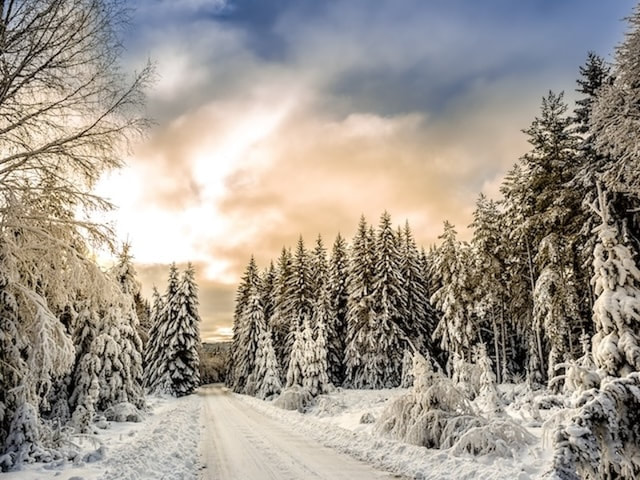
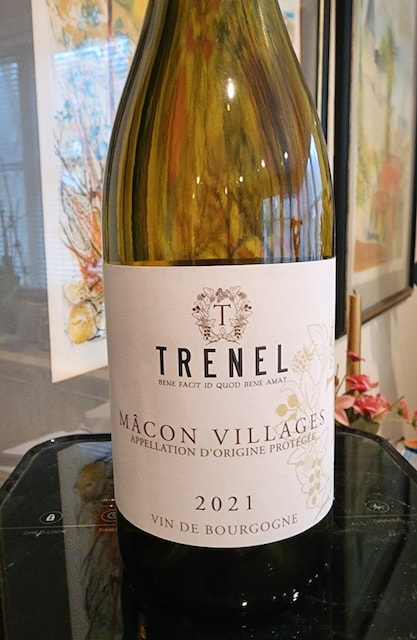
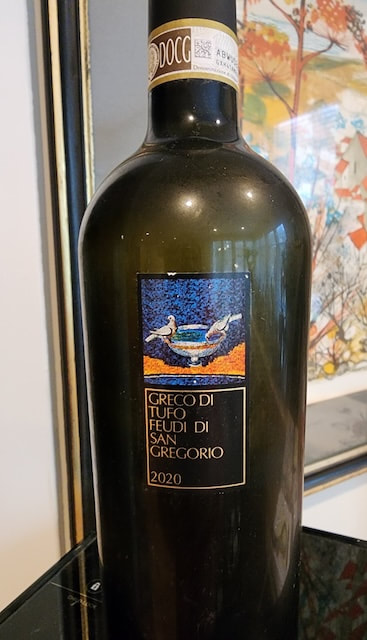
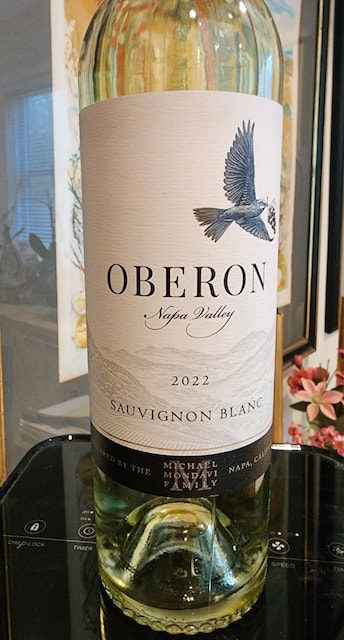
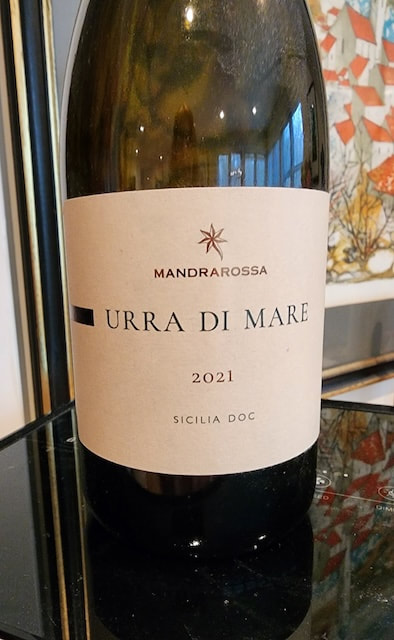
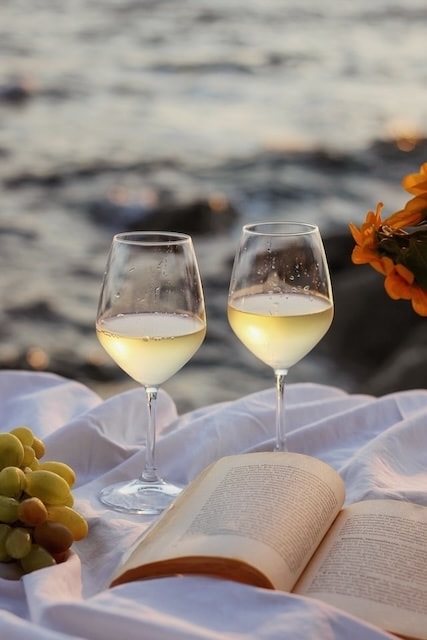
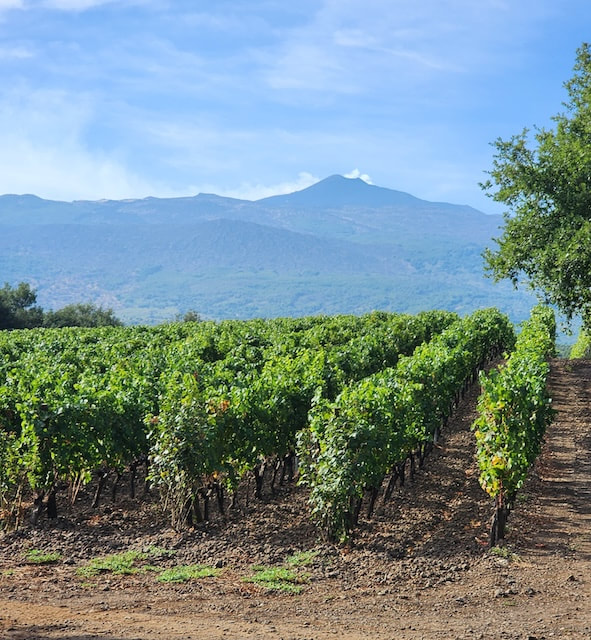
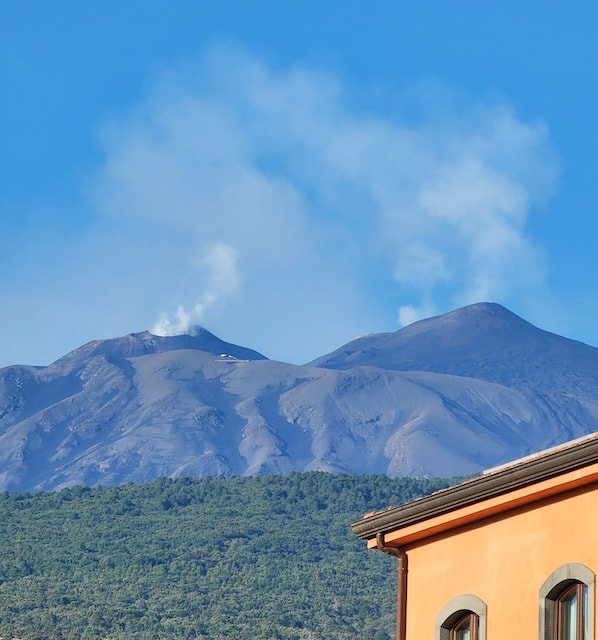
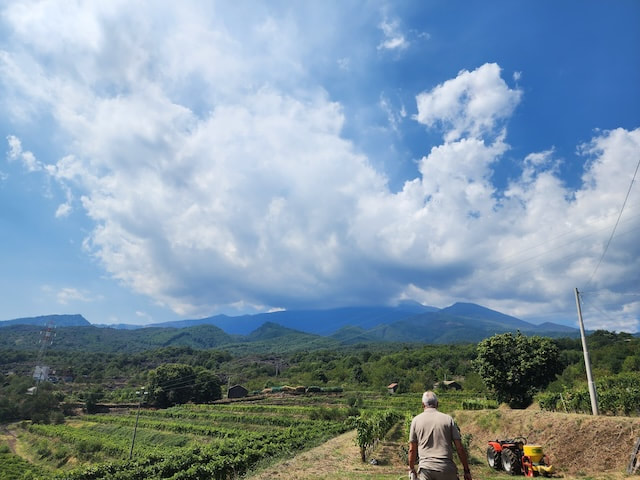
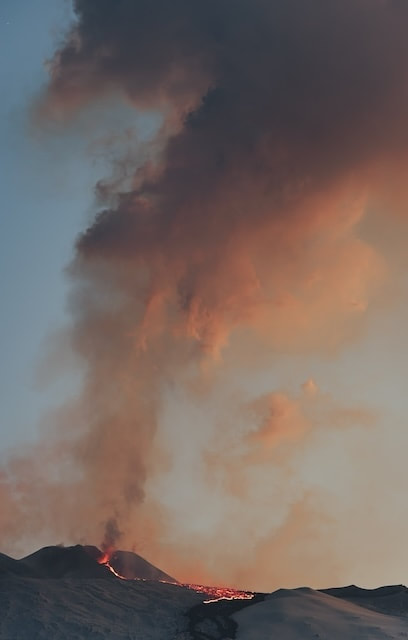
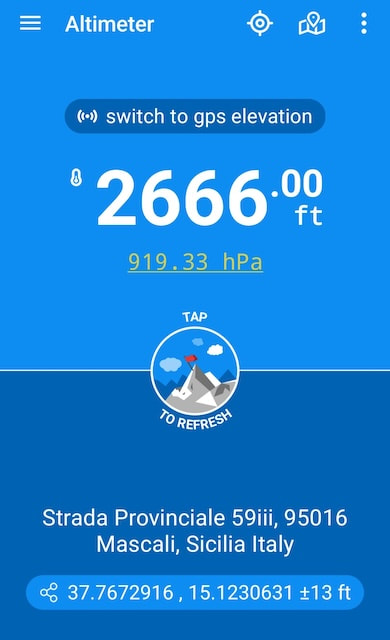
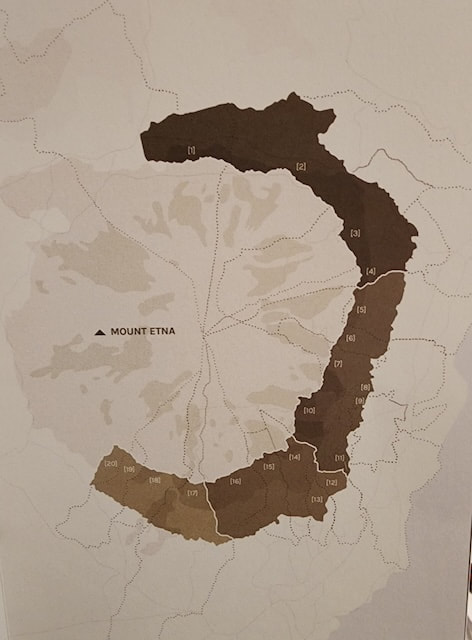
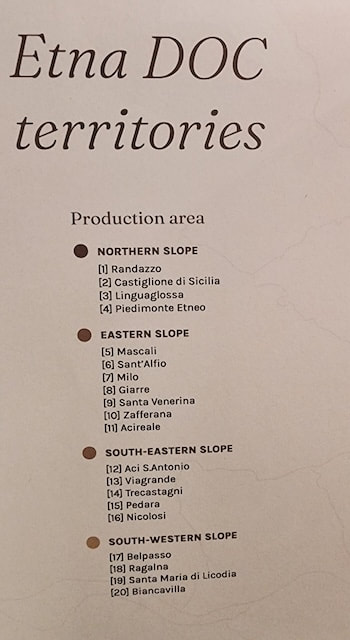
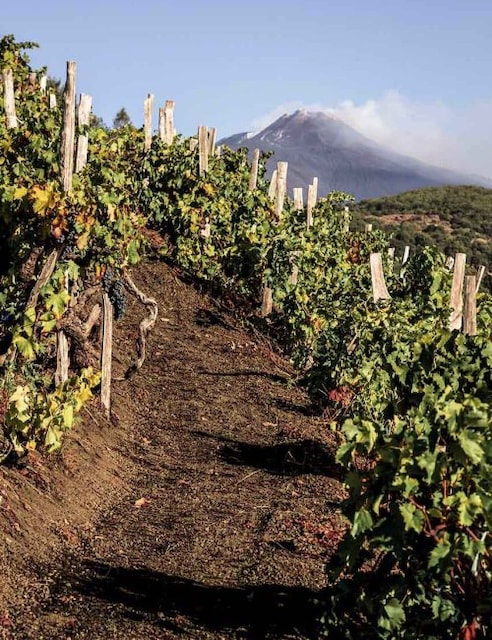
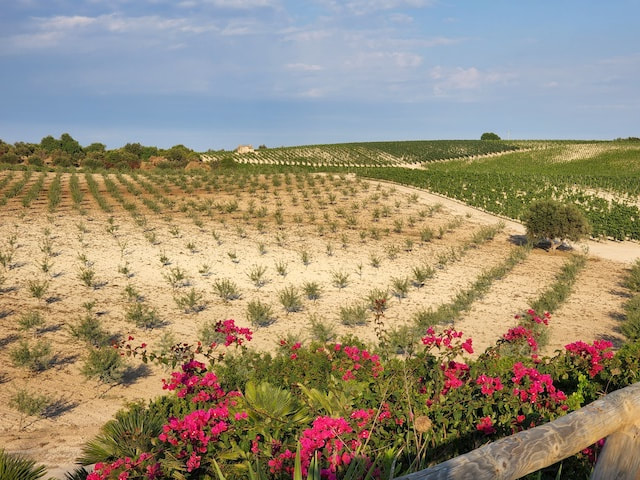
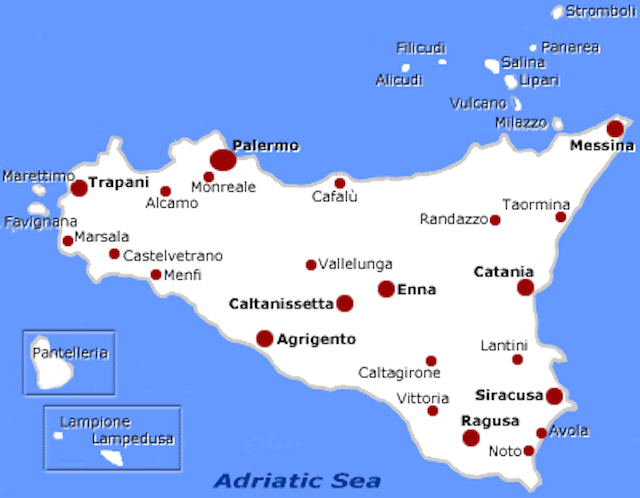
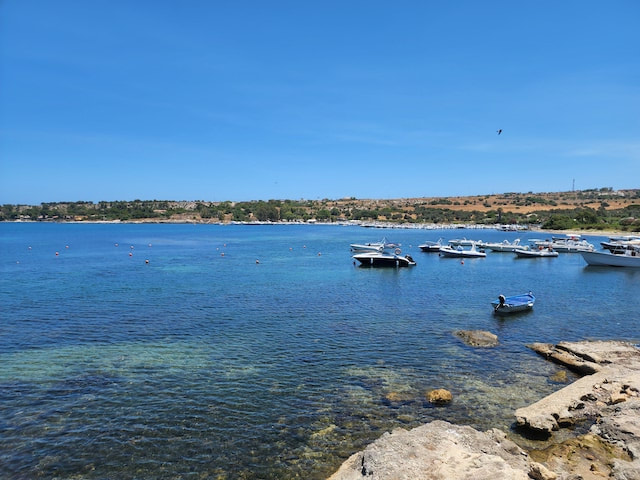
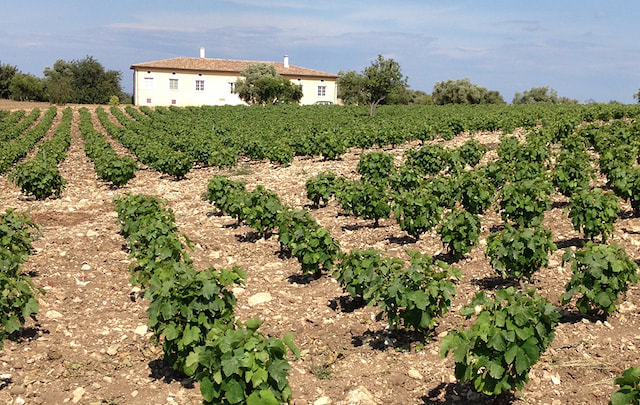
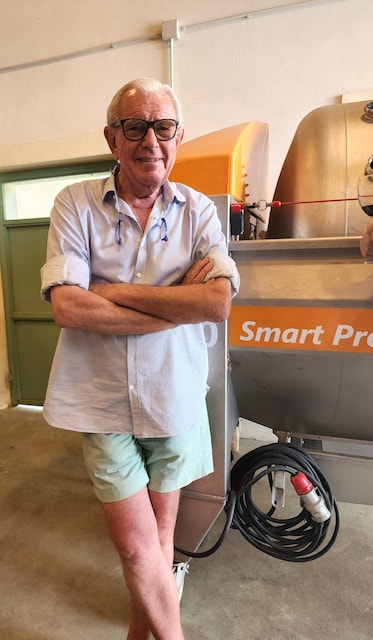
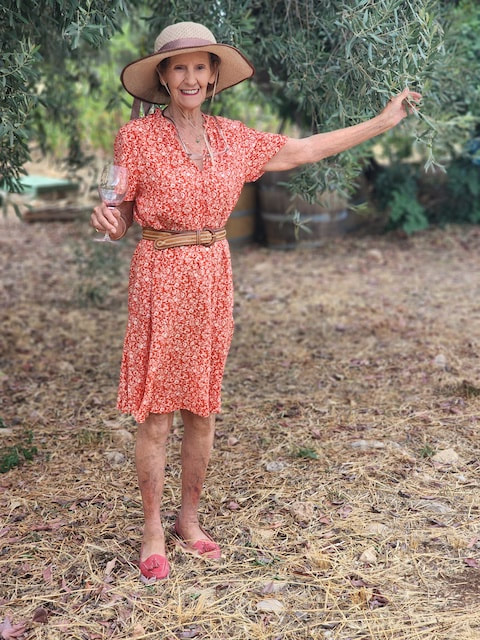
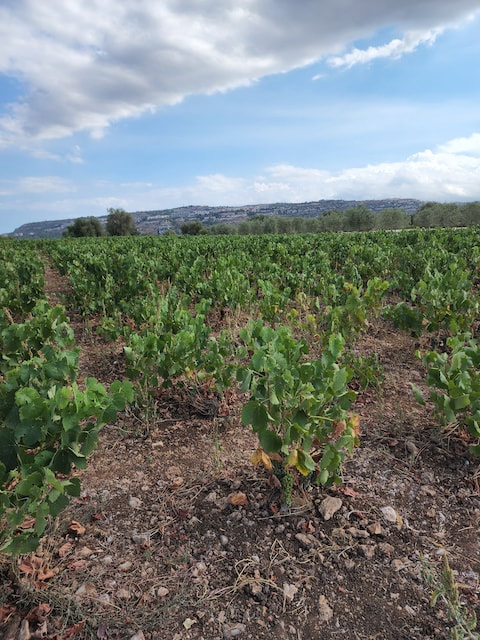
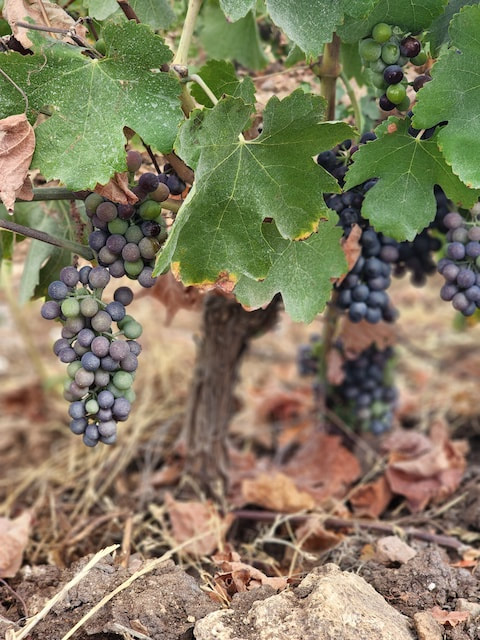
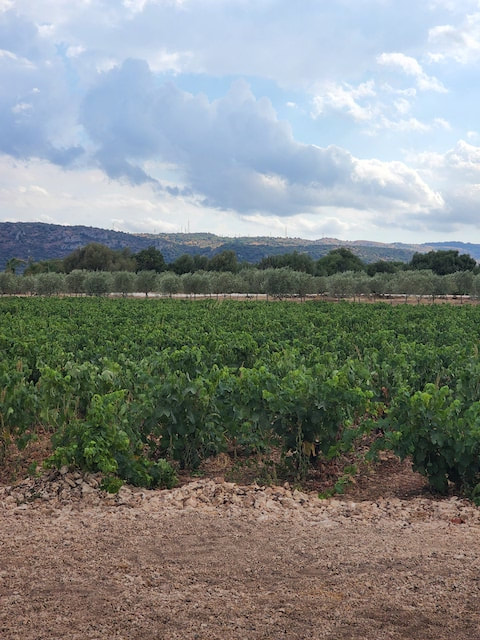
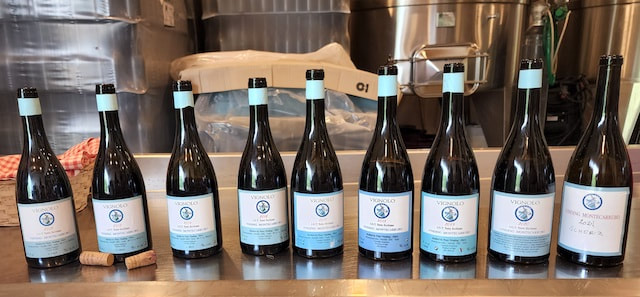
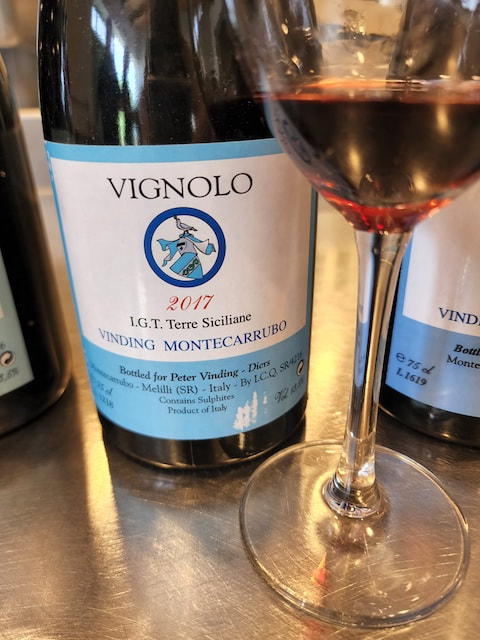
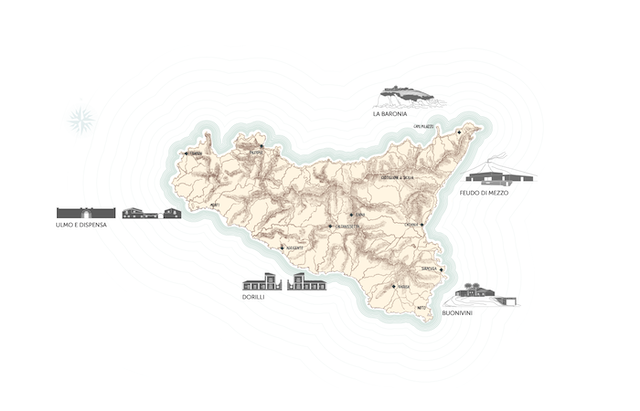
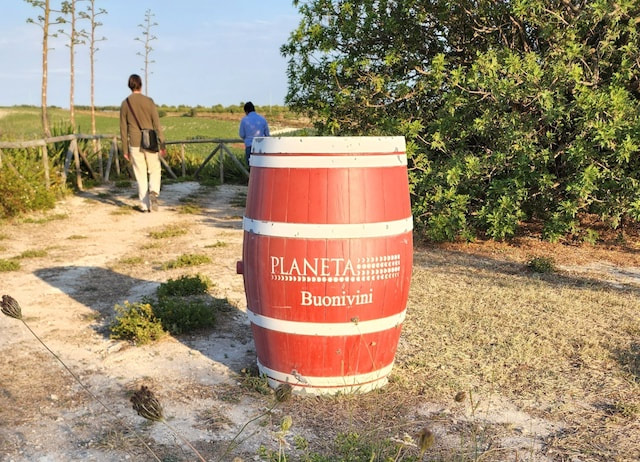
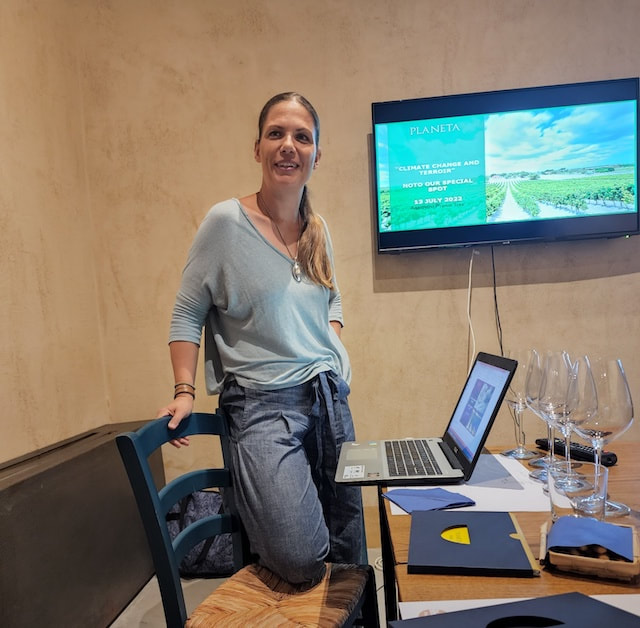
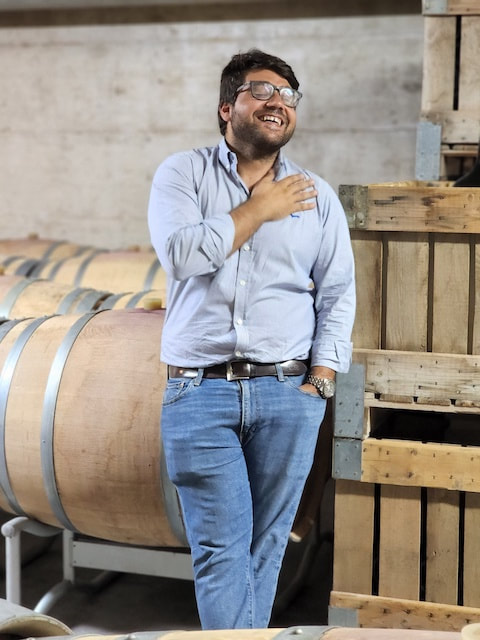
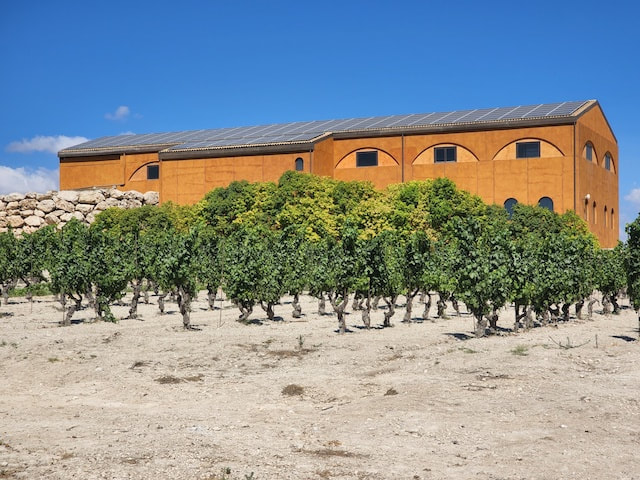
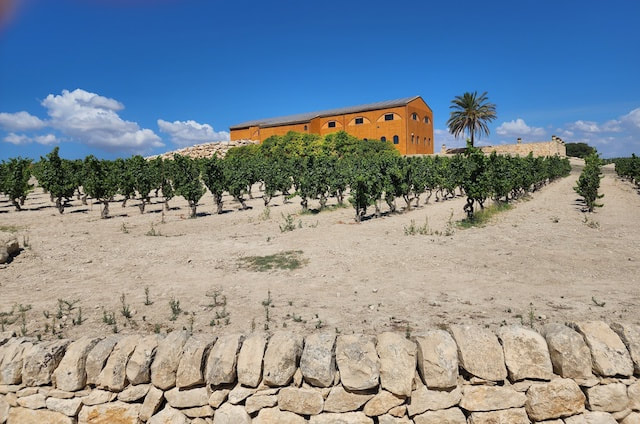
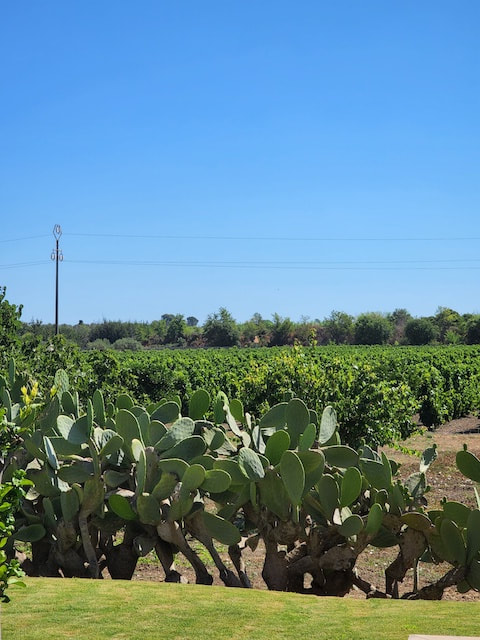
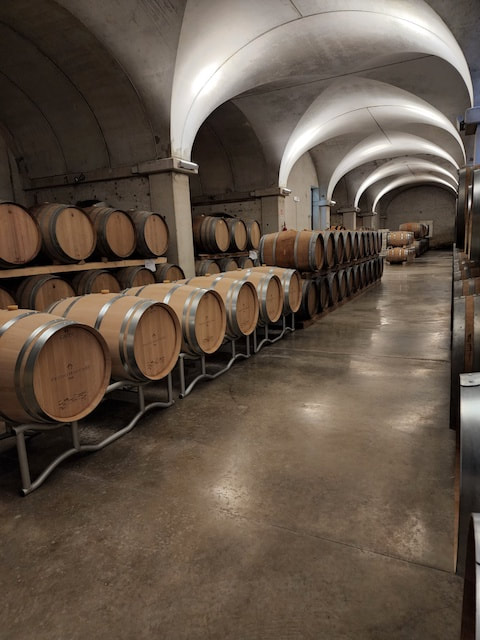
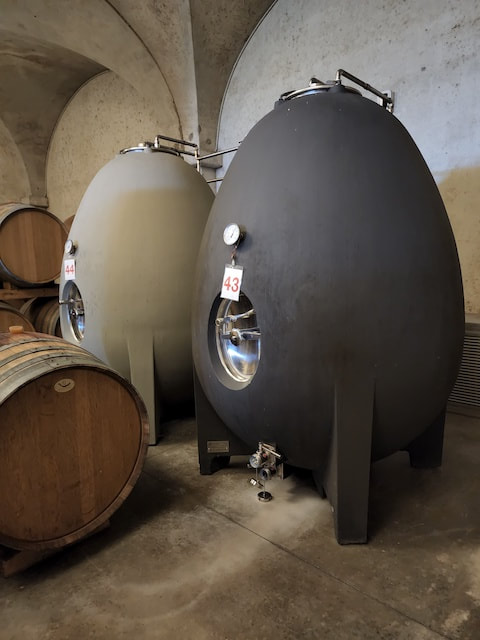
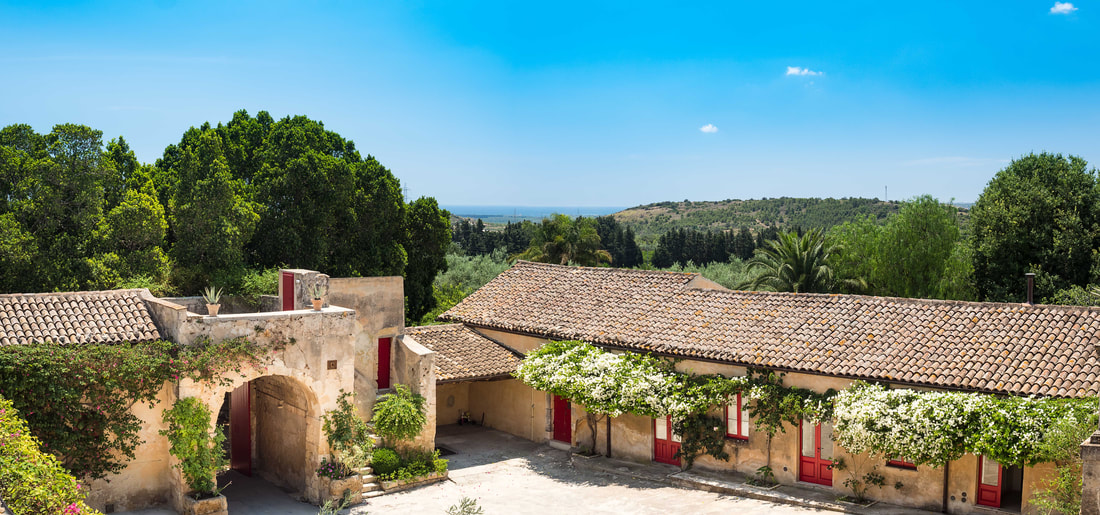
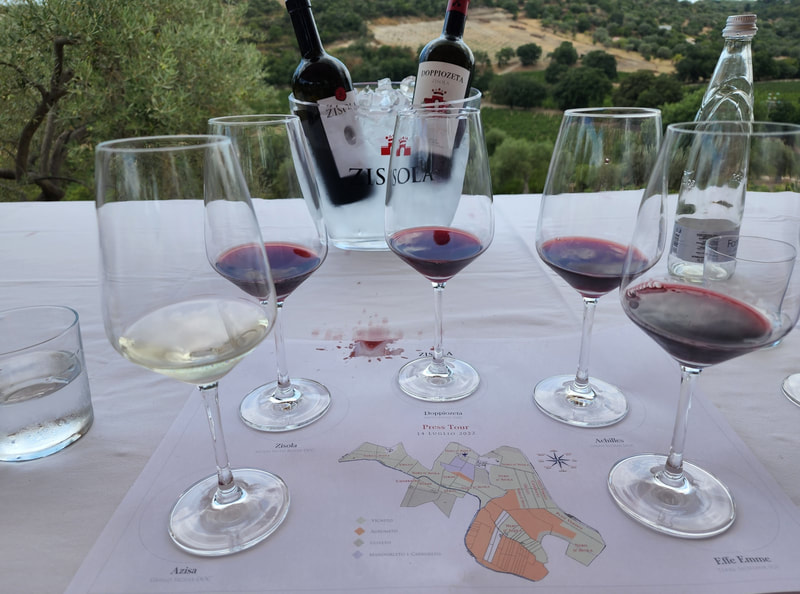
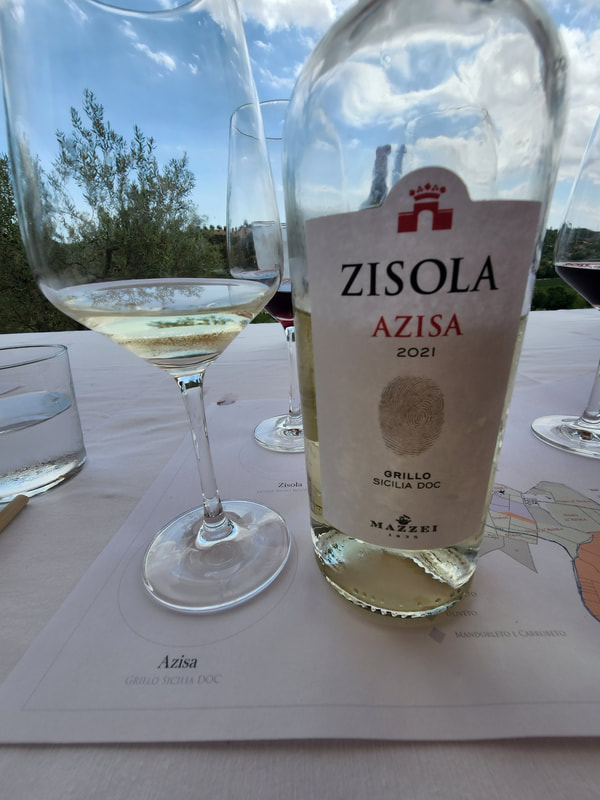
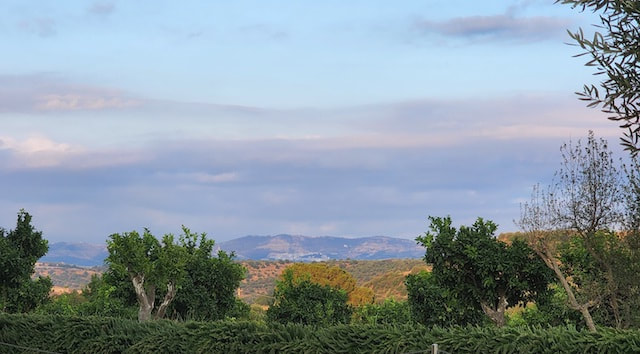
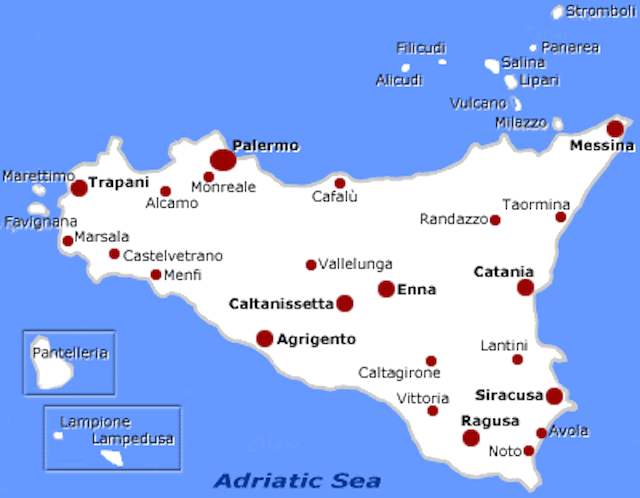
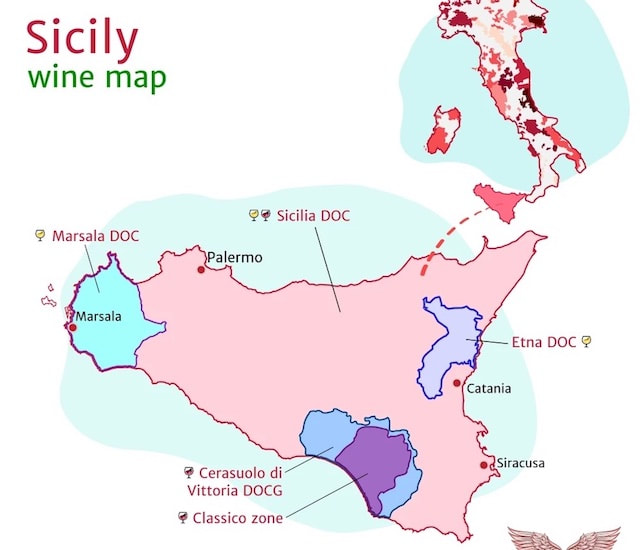
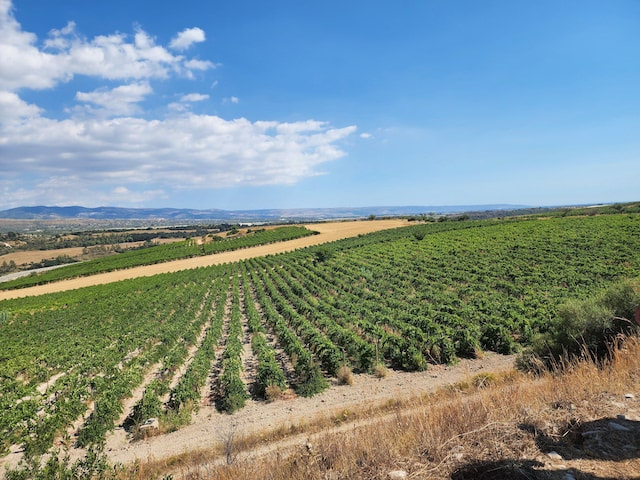
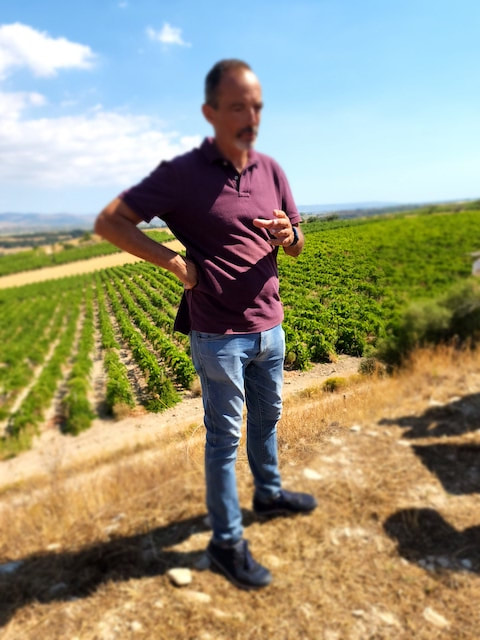
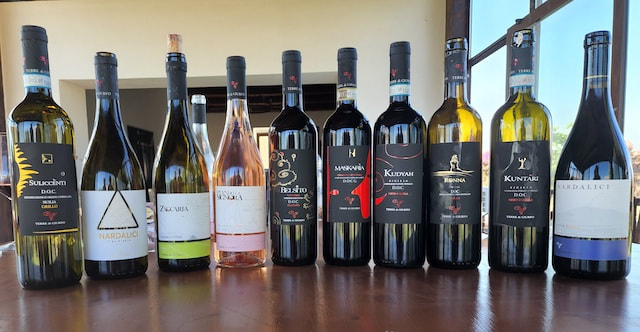
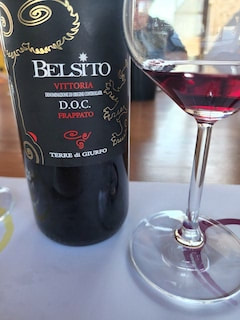
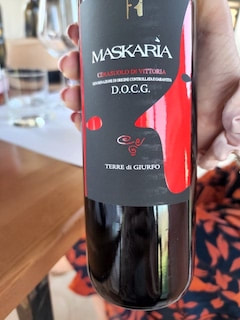
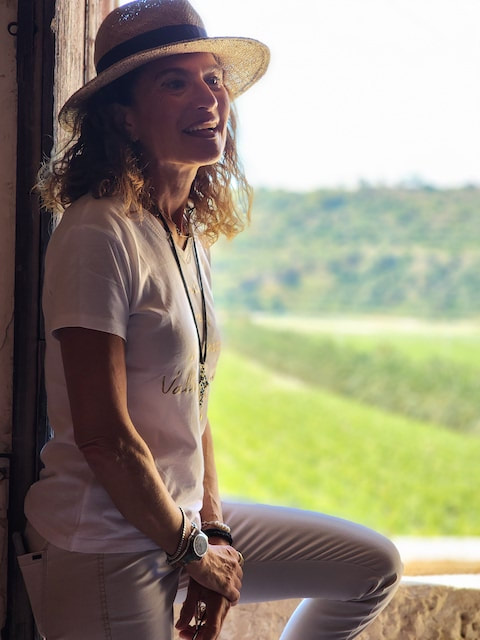
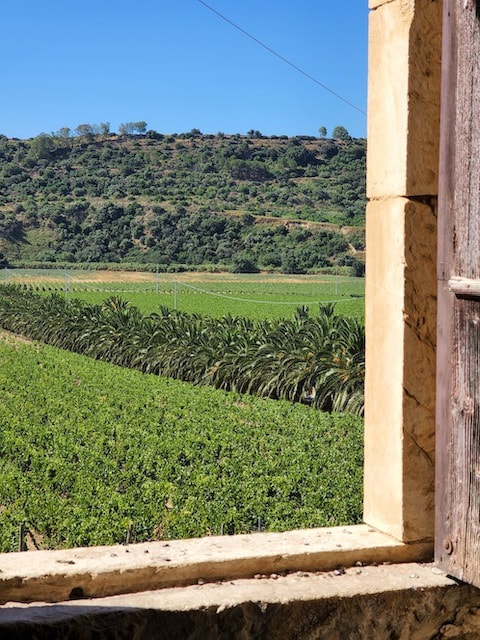
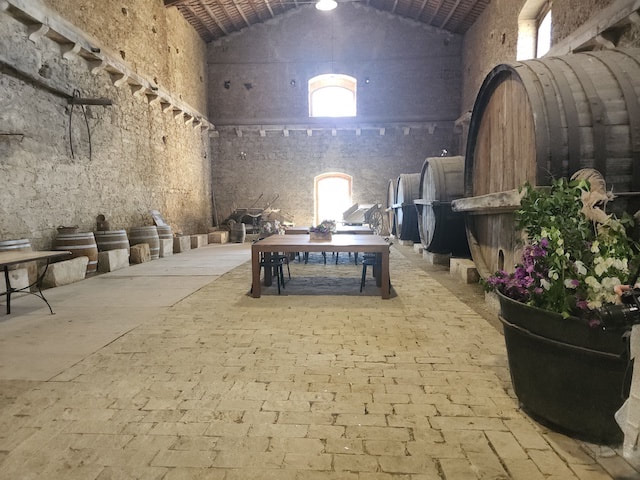
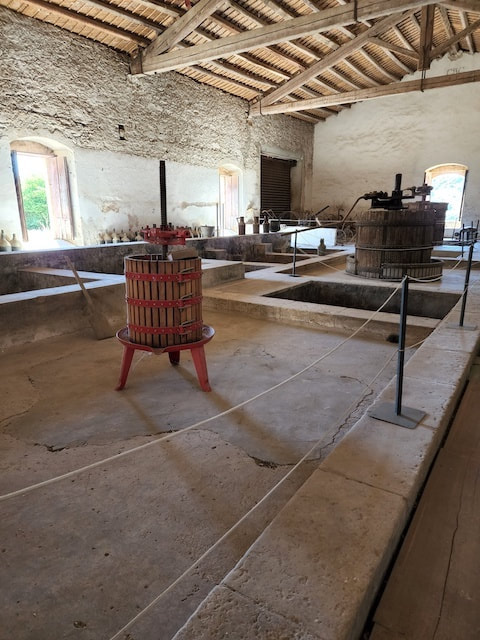
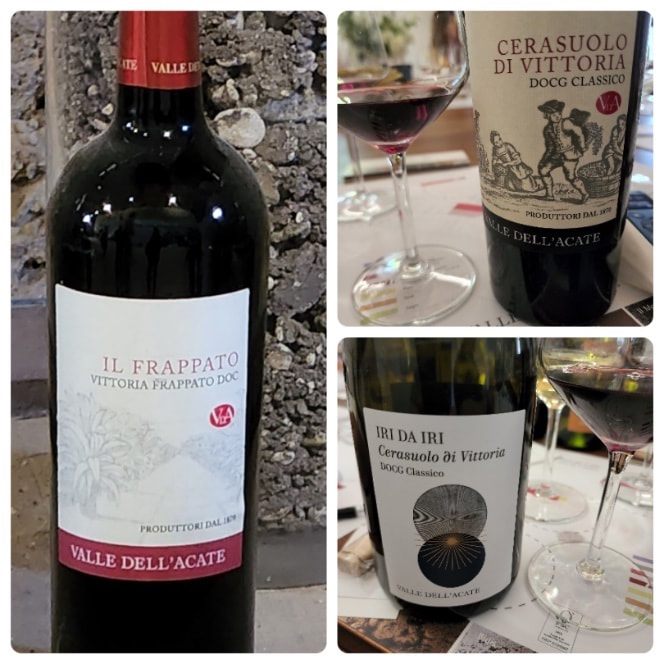
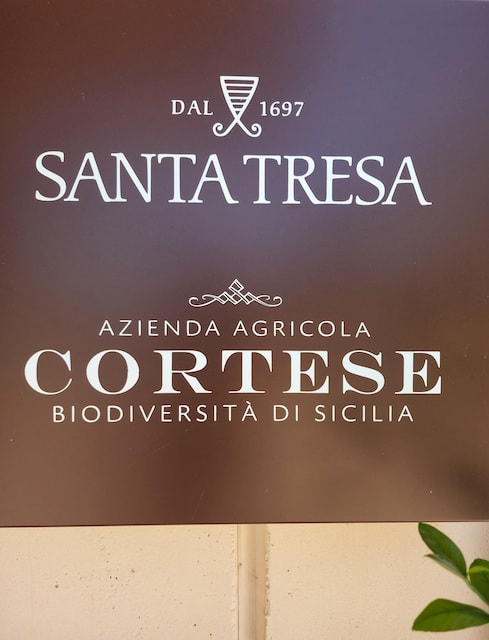
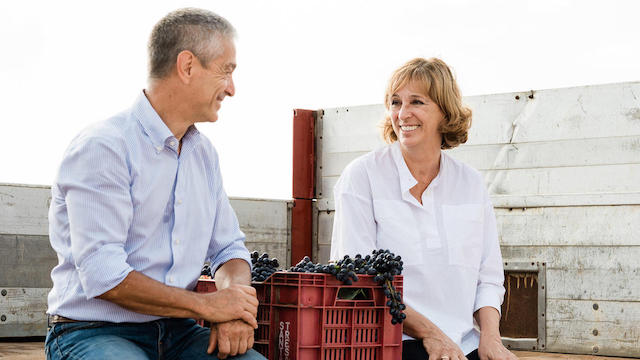
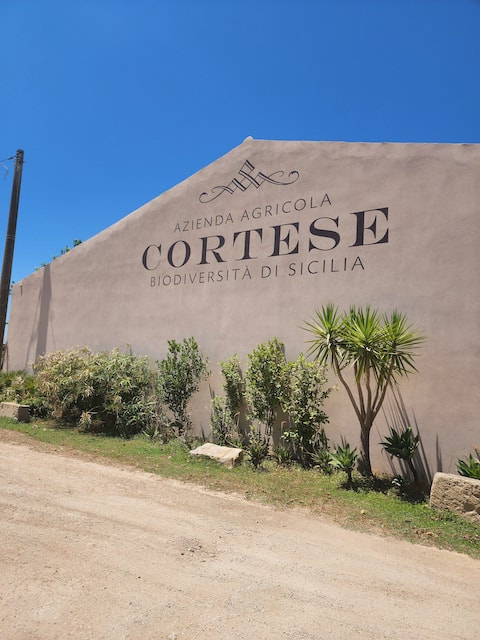
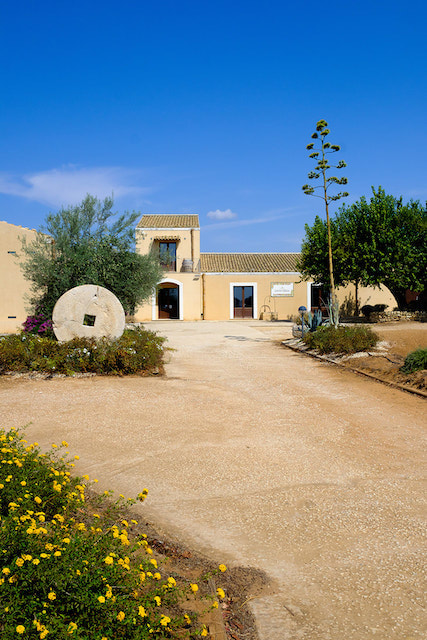
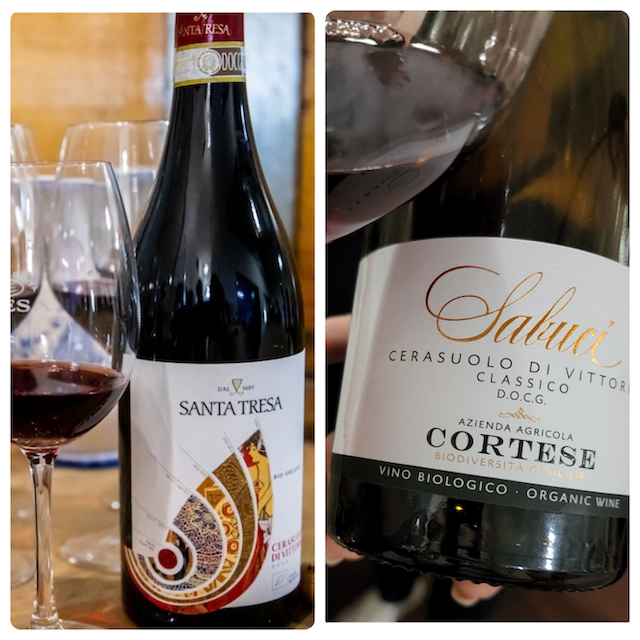
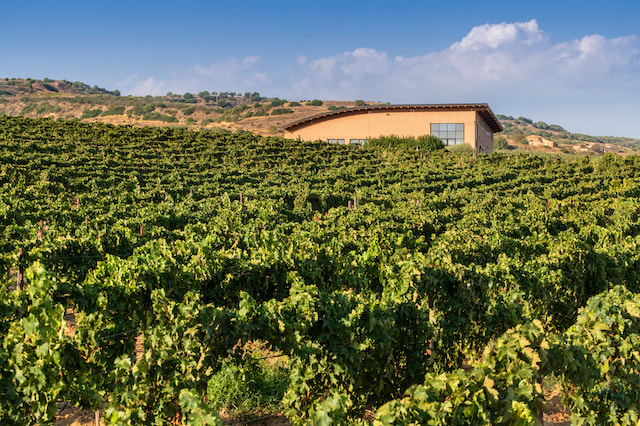
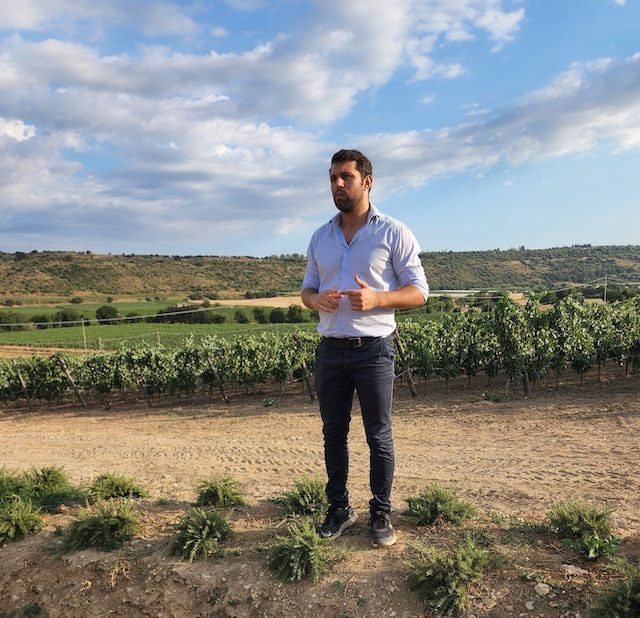
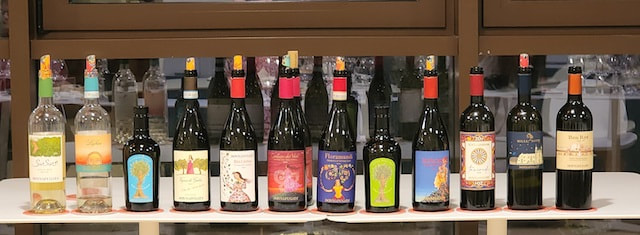
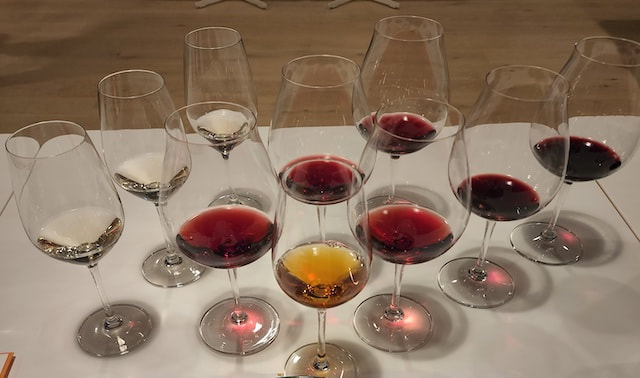
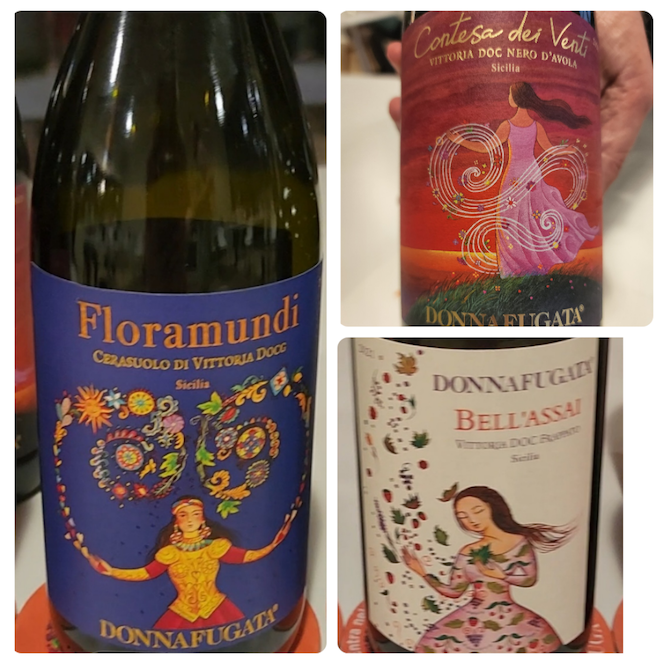
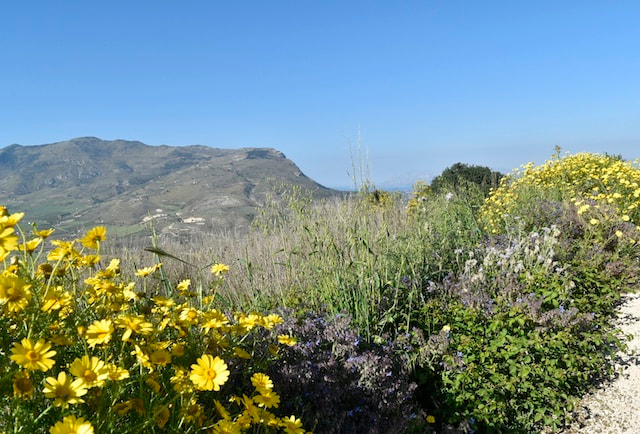
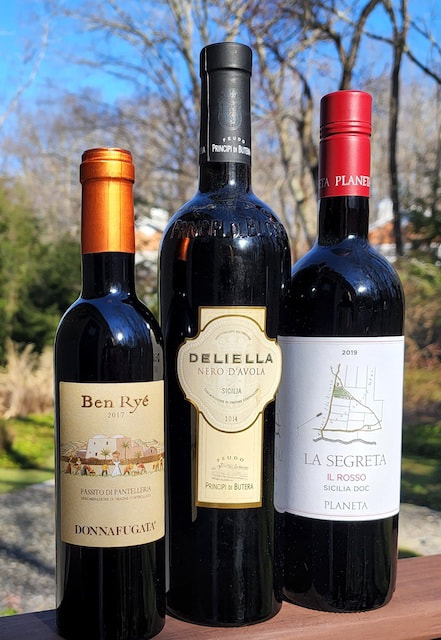
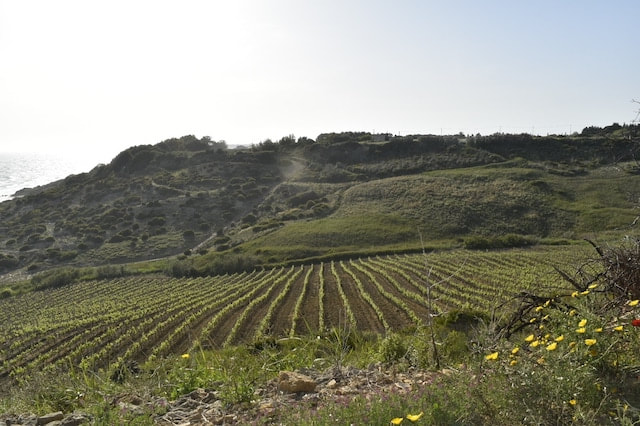
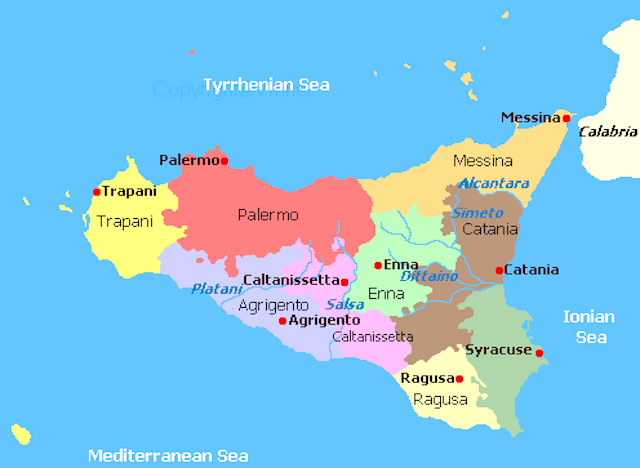
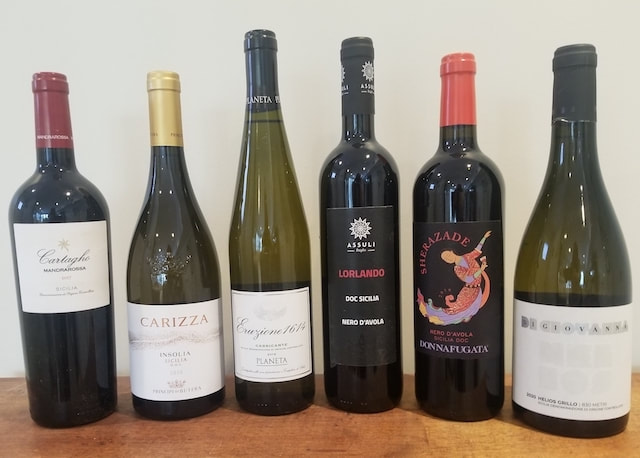
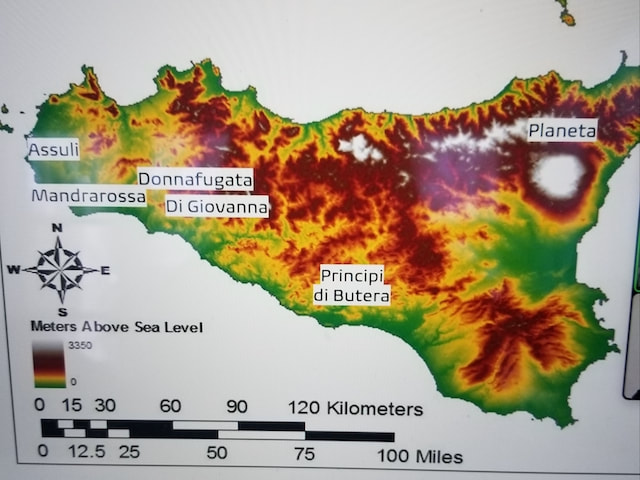
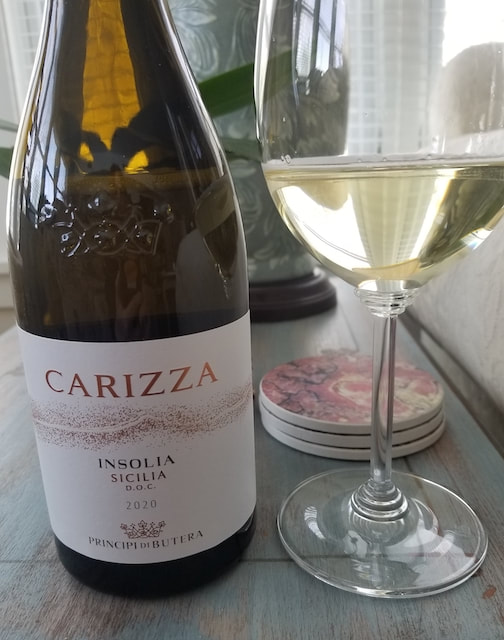
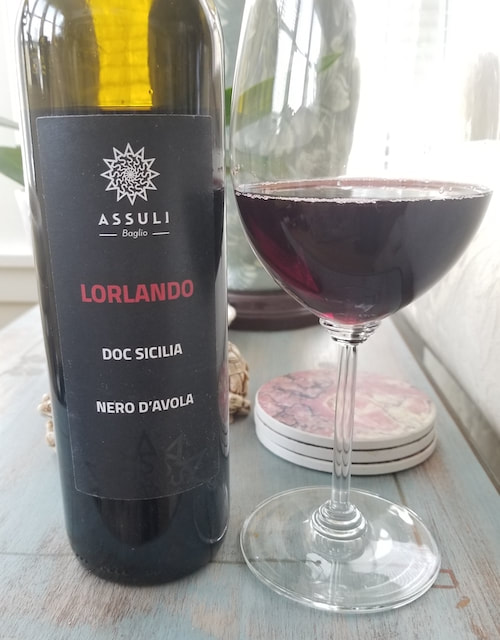
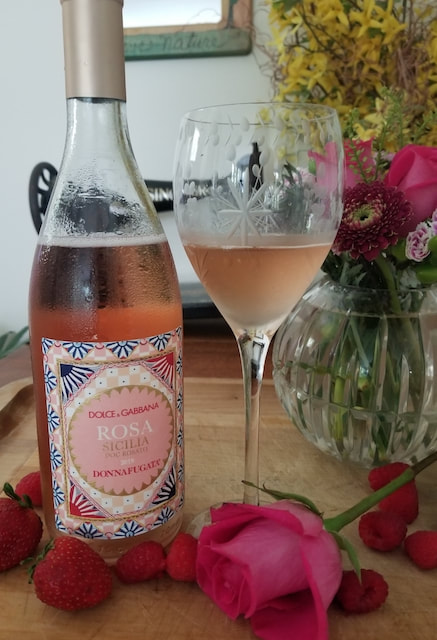
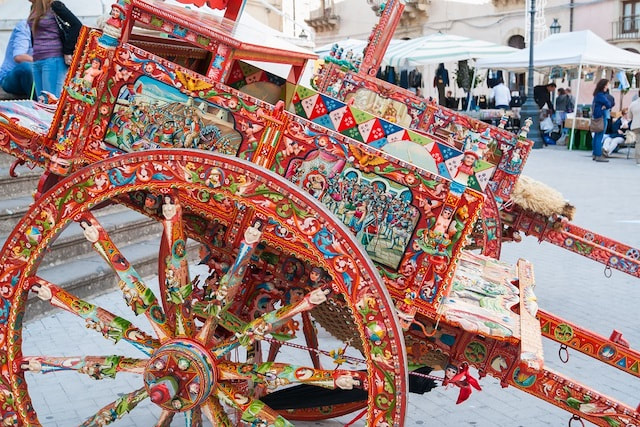
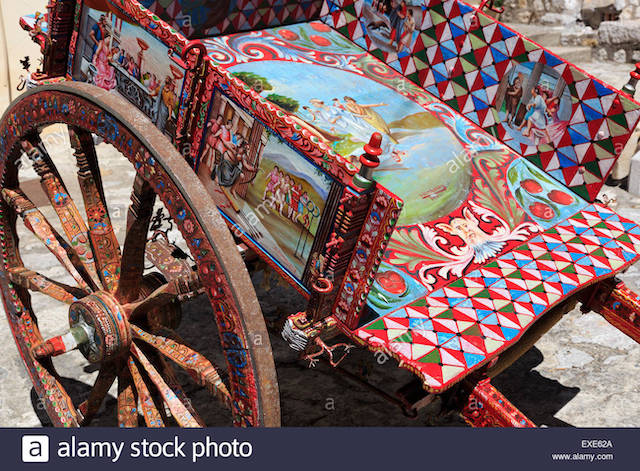
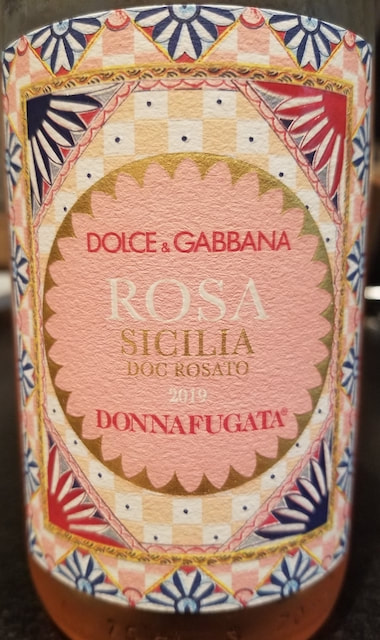
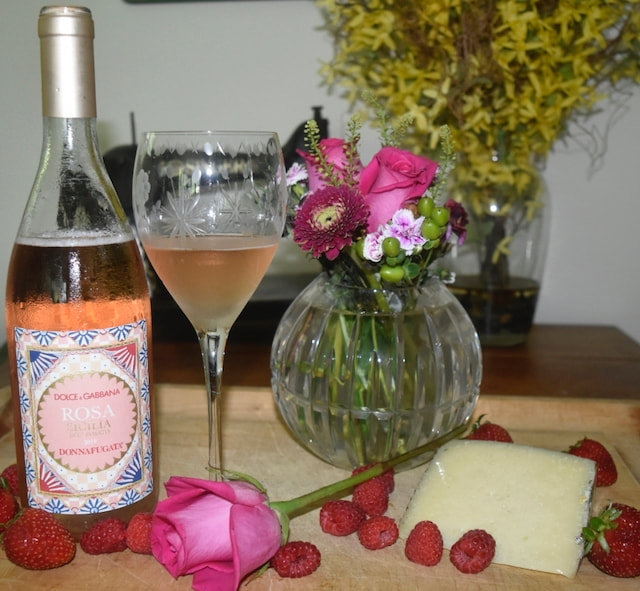
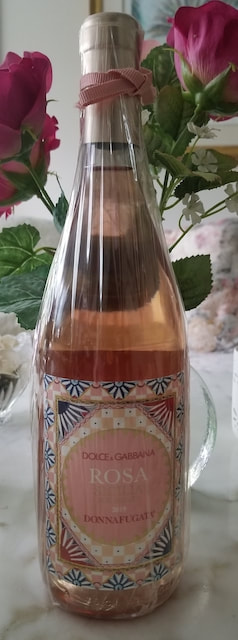
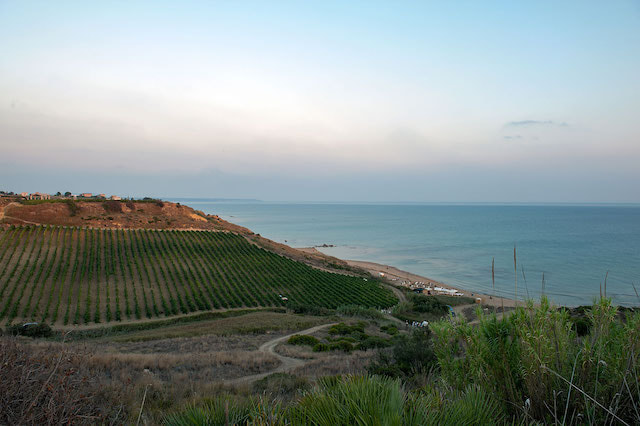
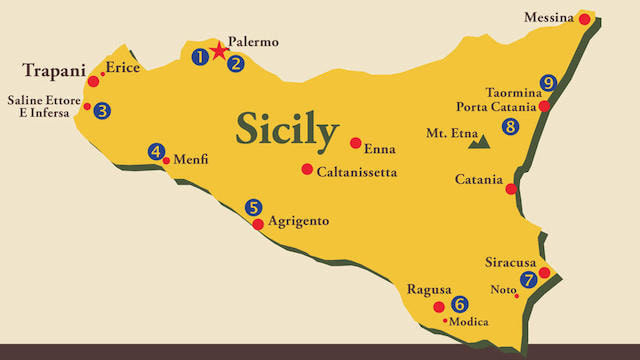
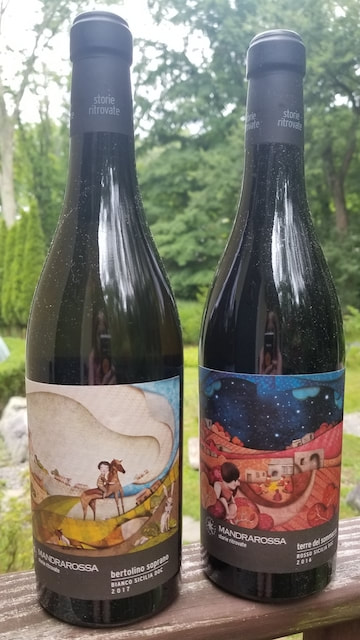
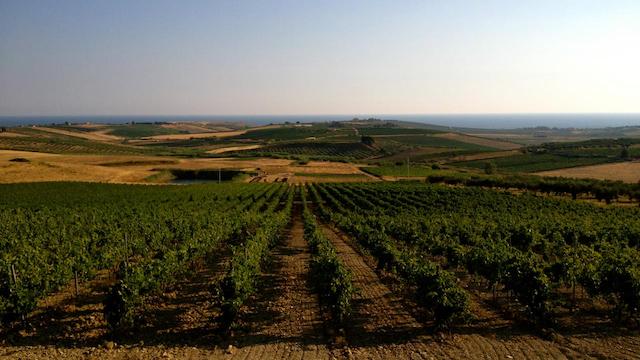
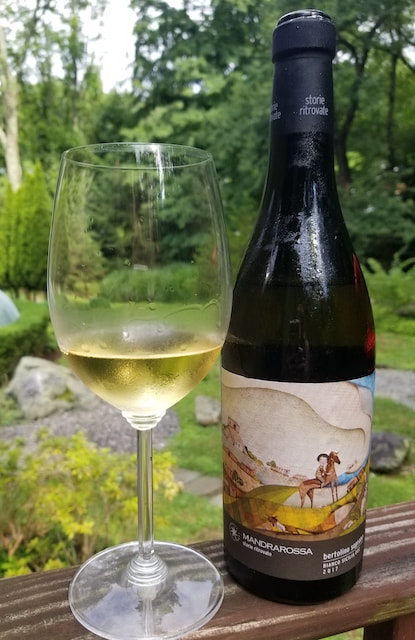
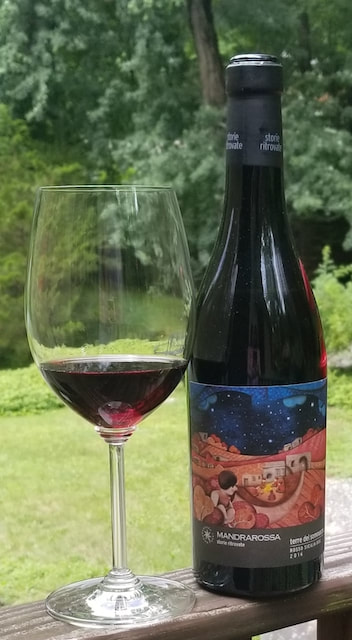
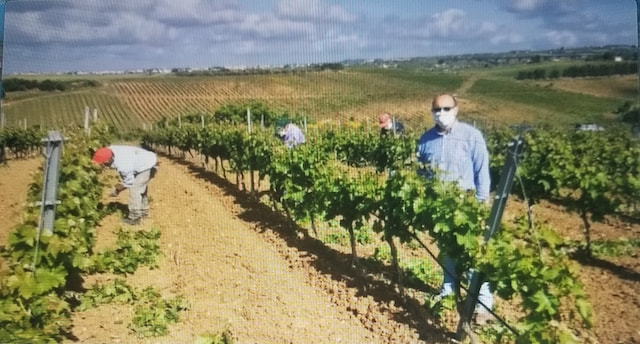
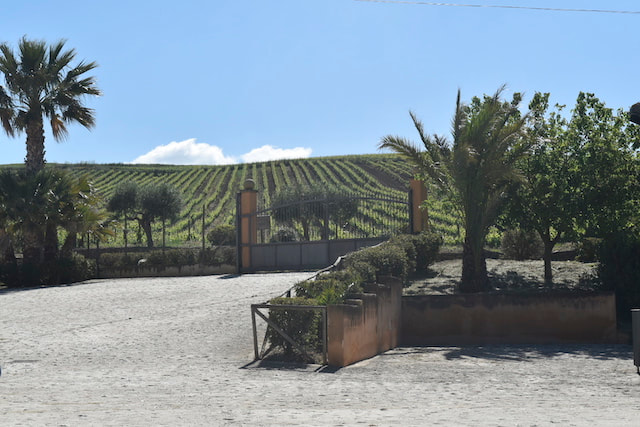
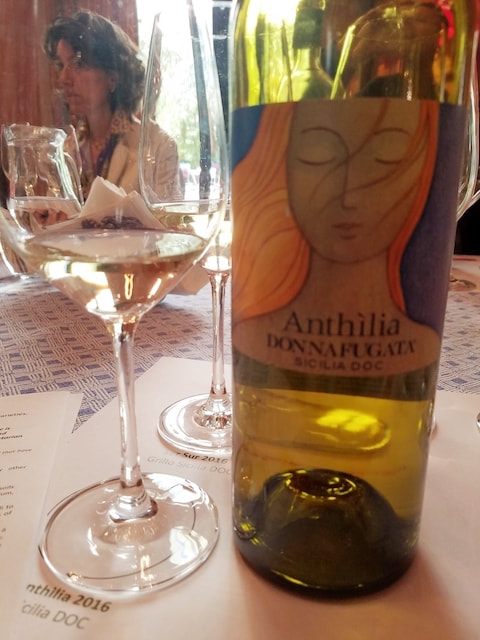
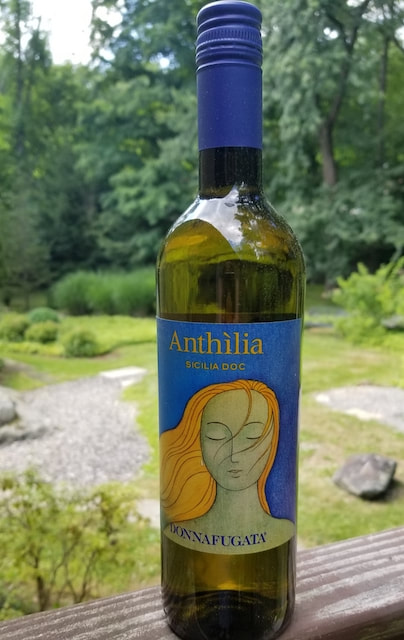
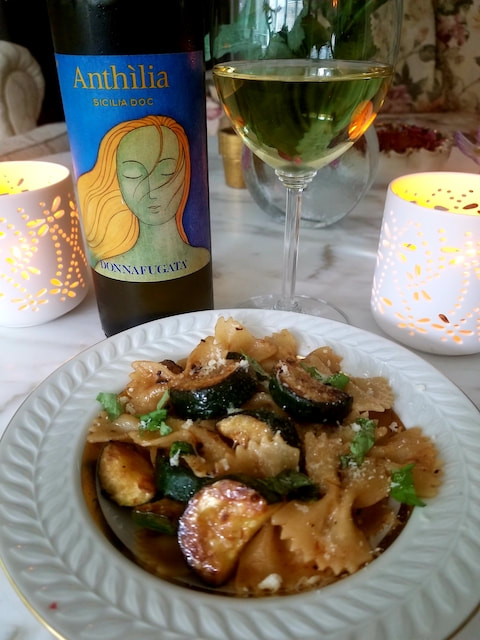
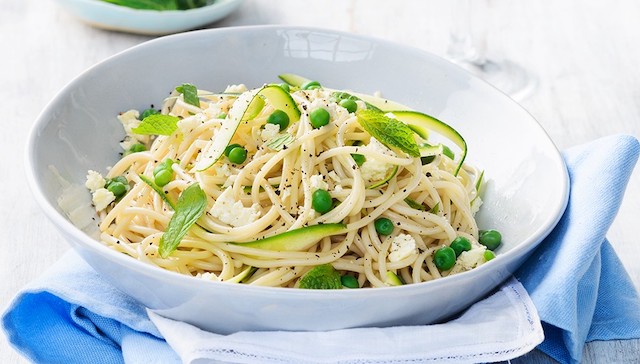
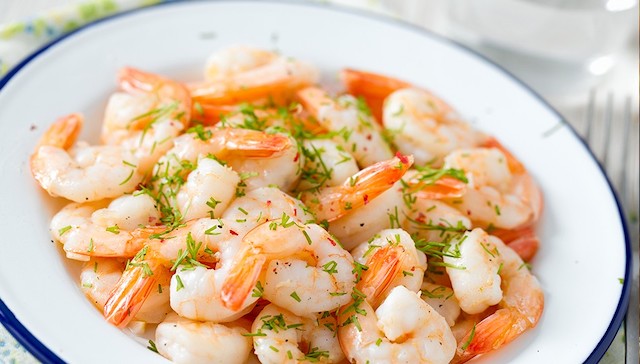
 RSS Feed
RSS Feed